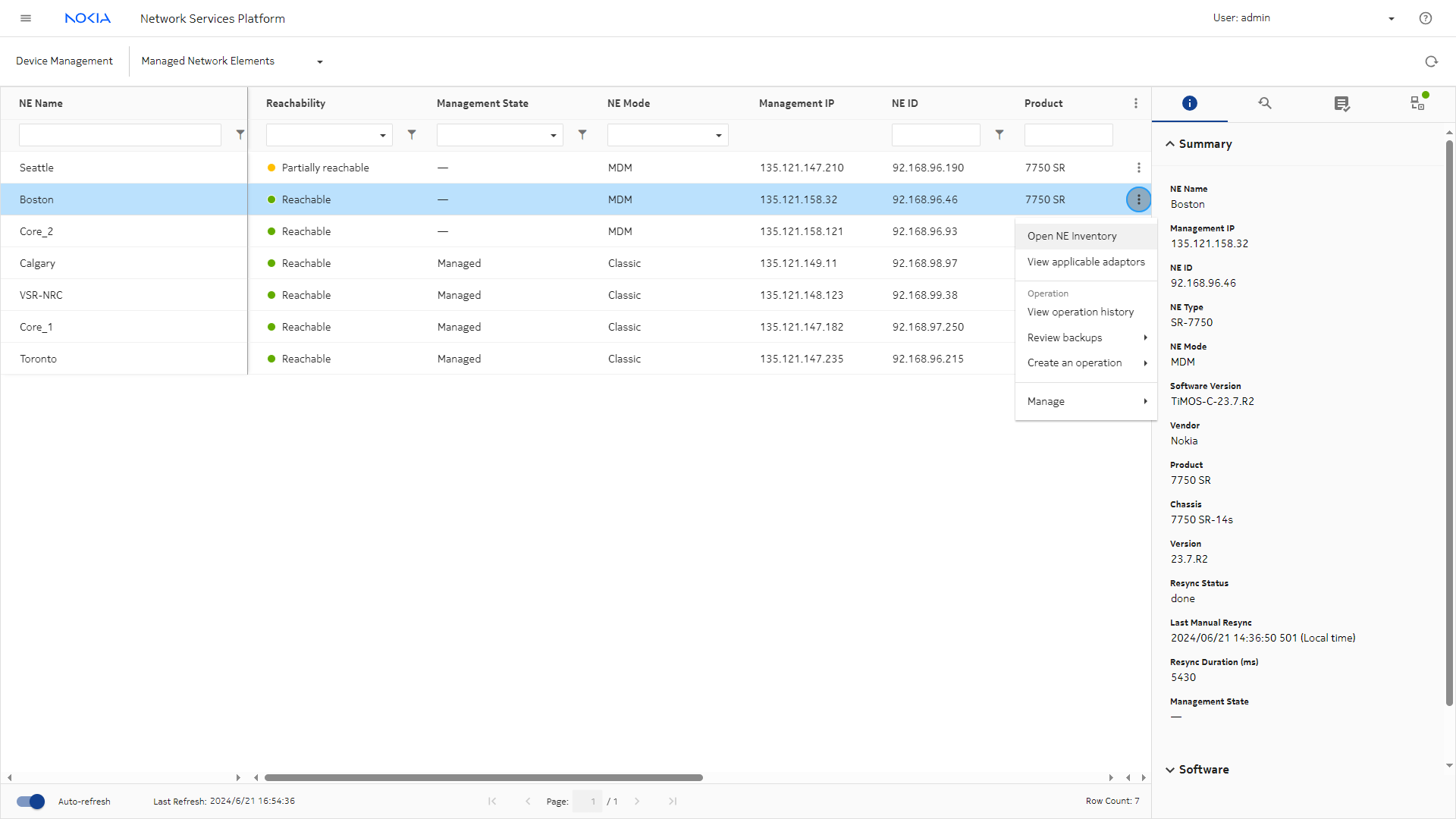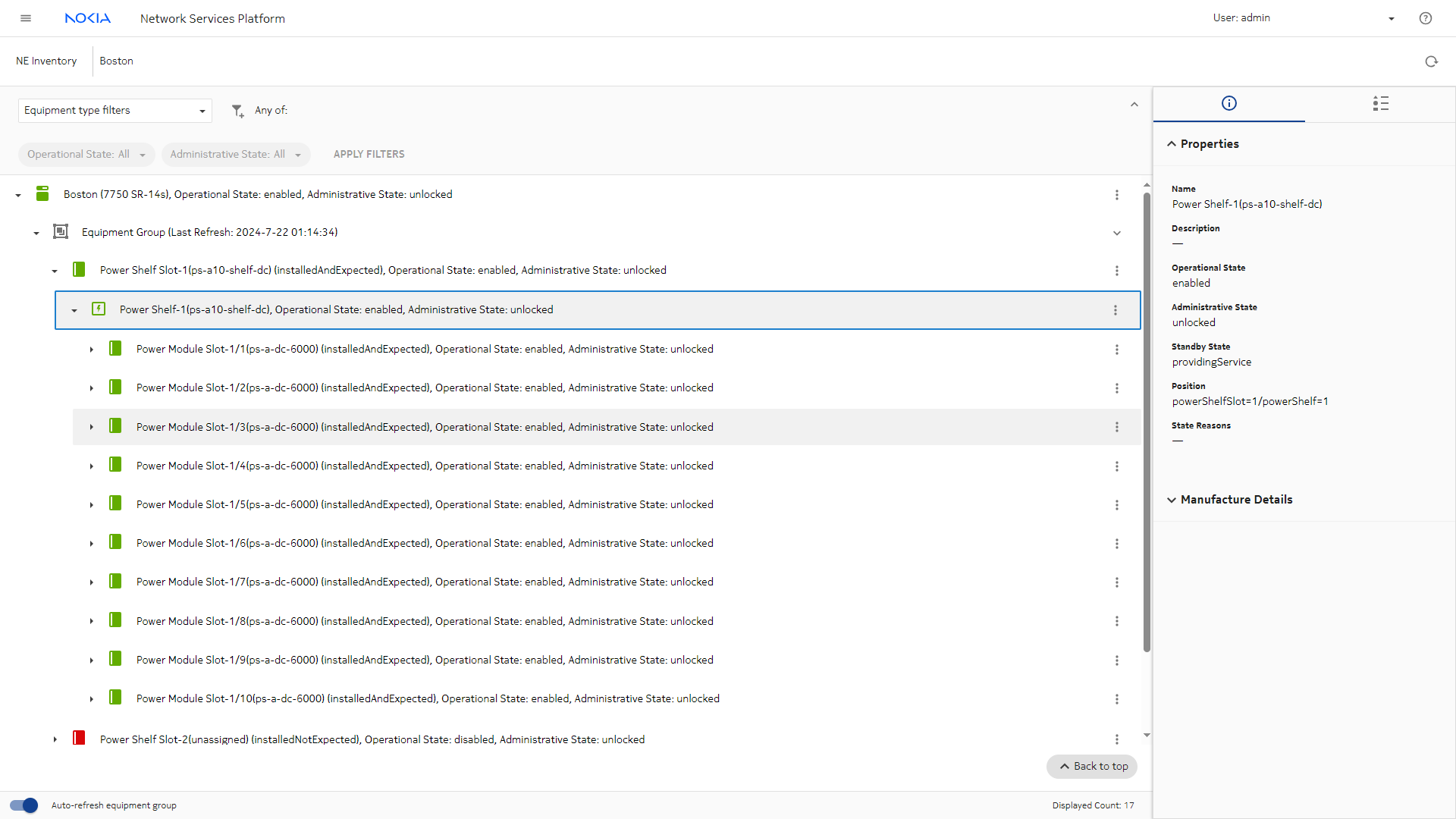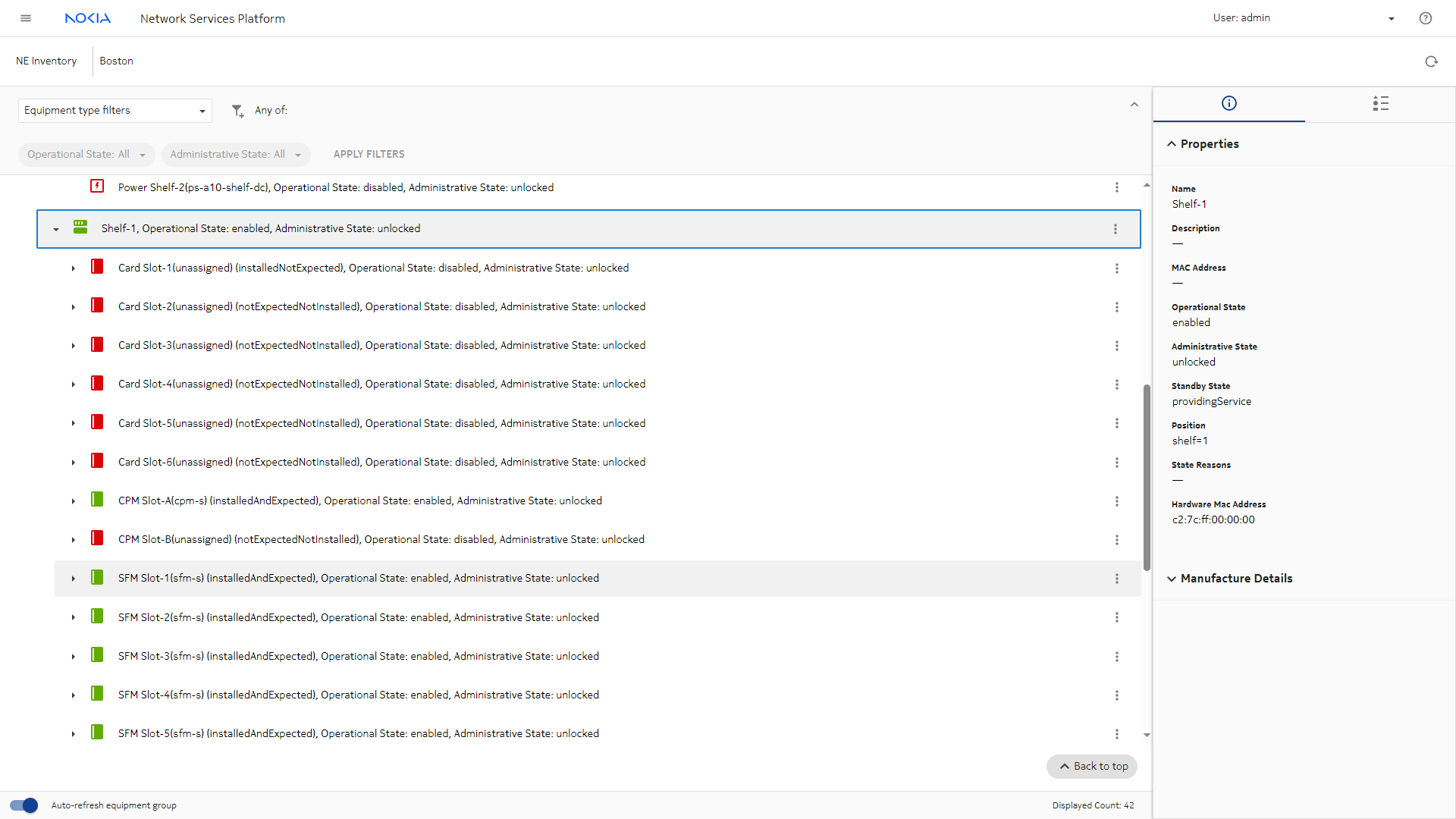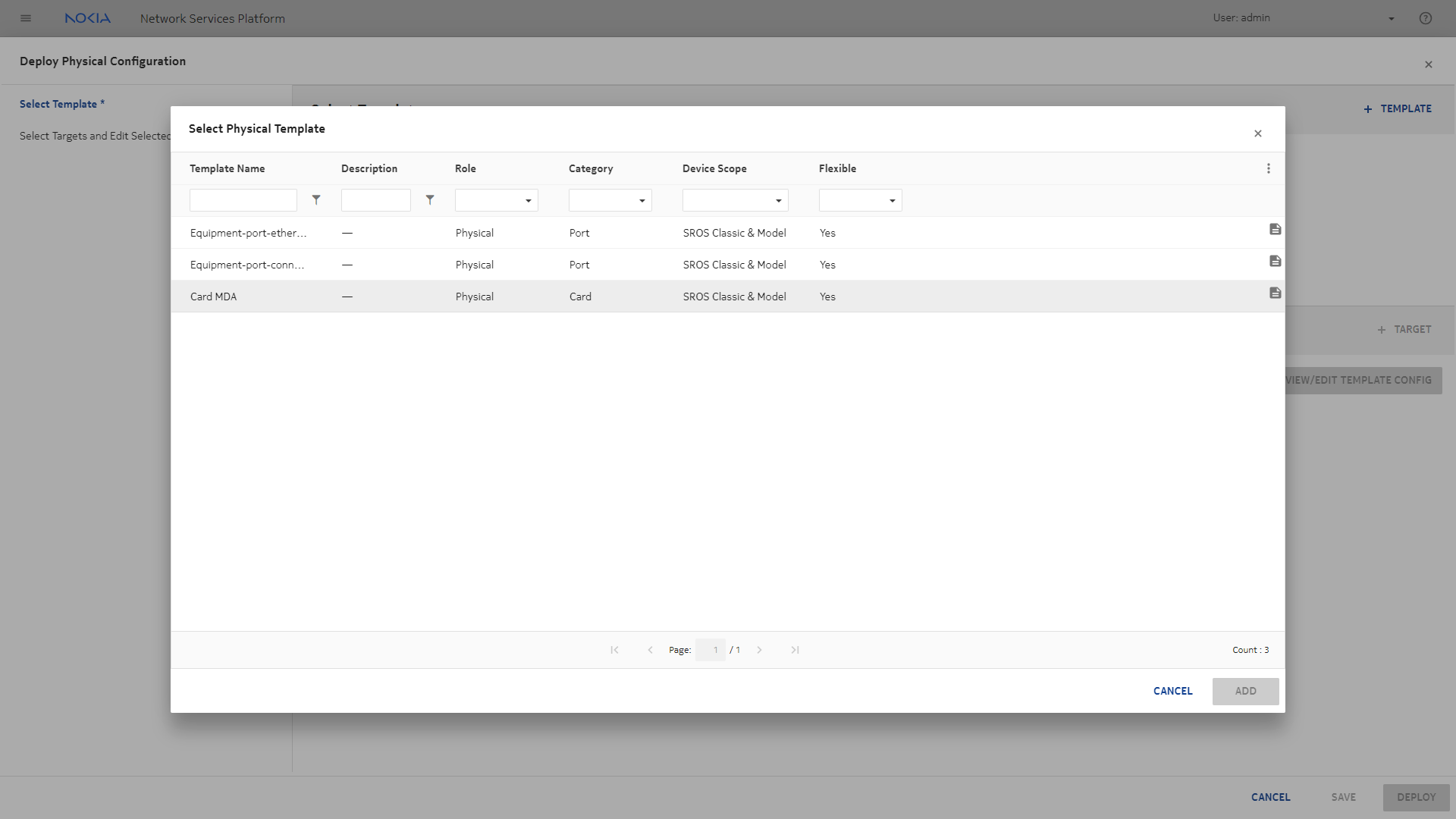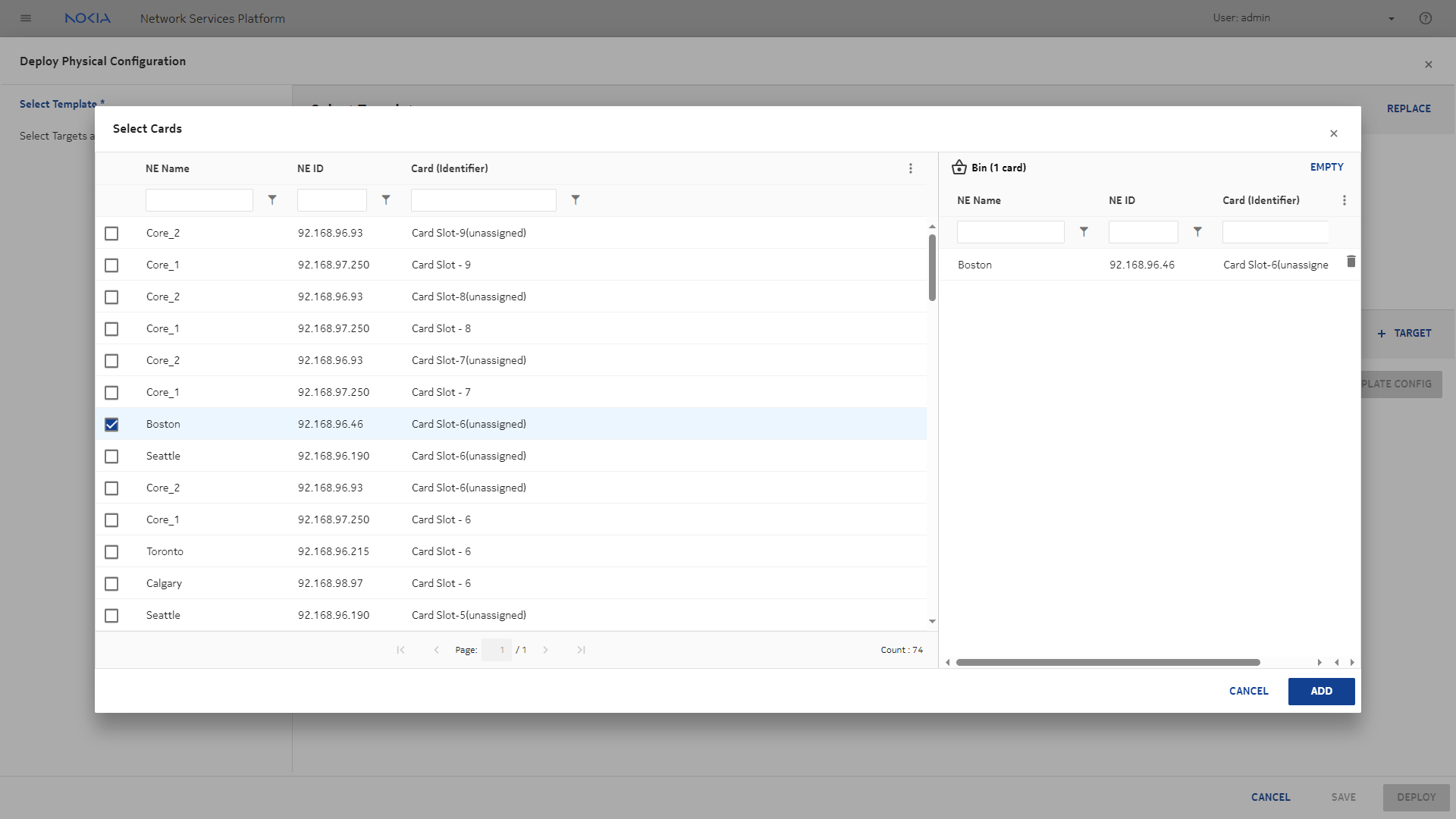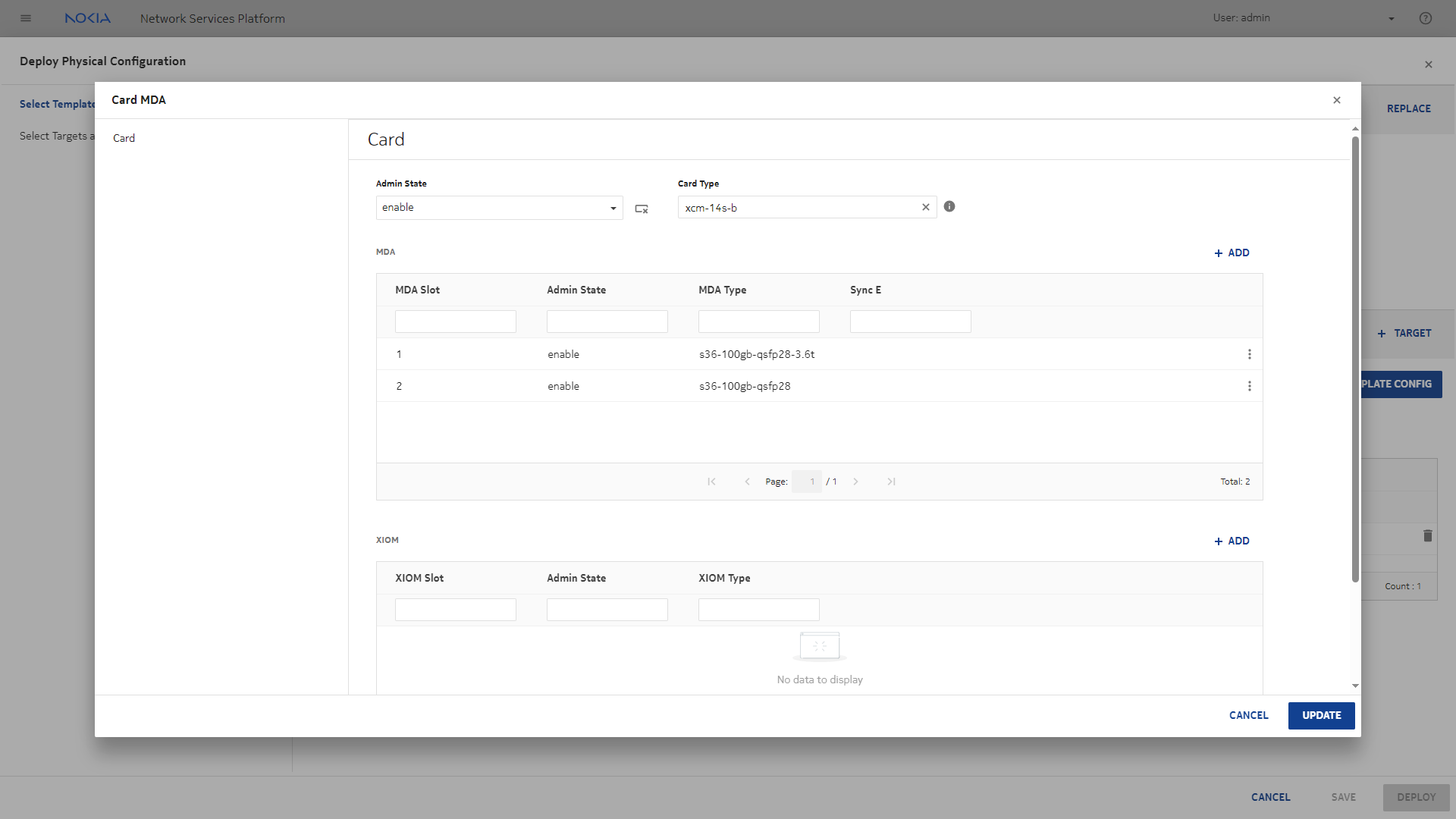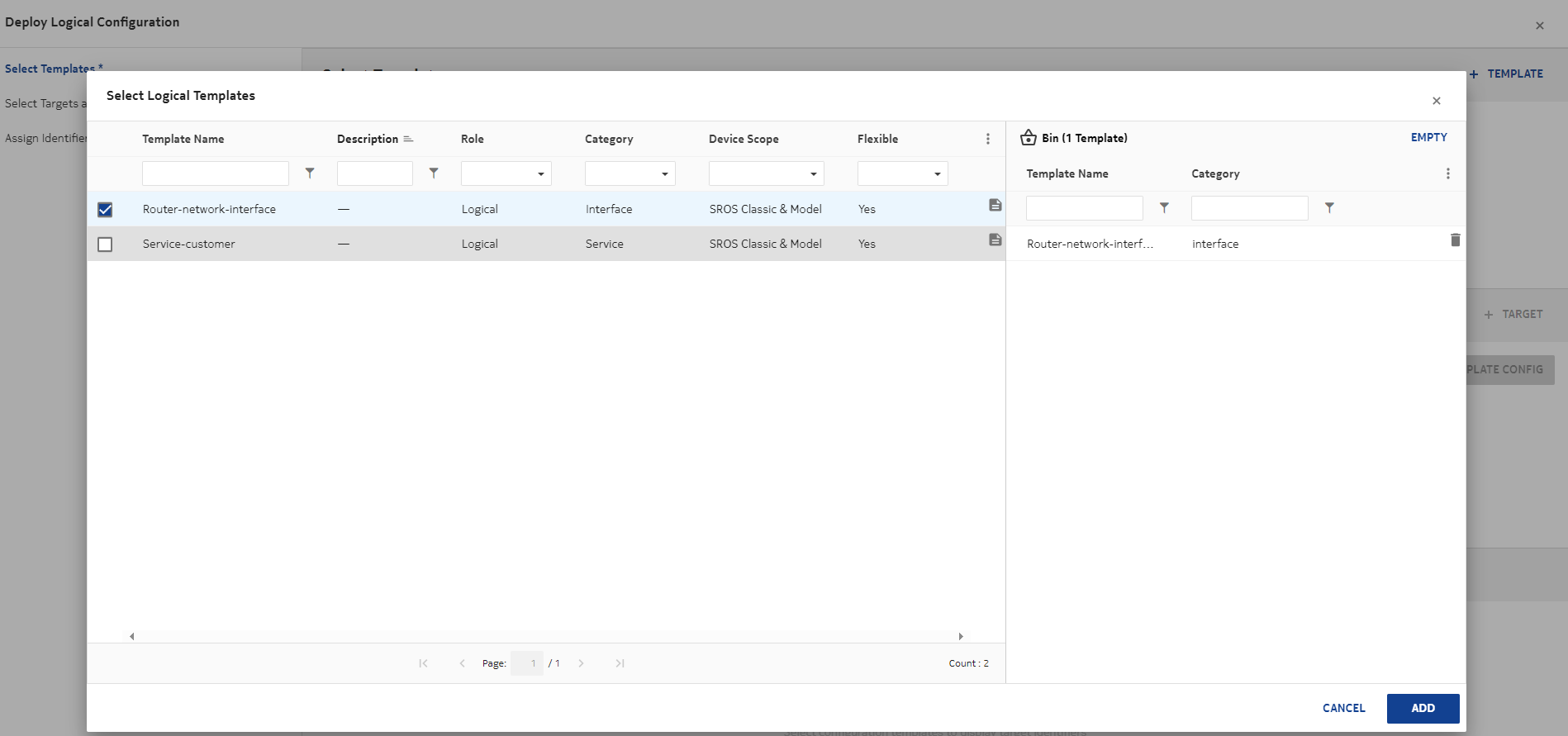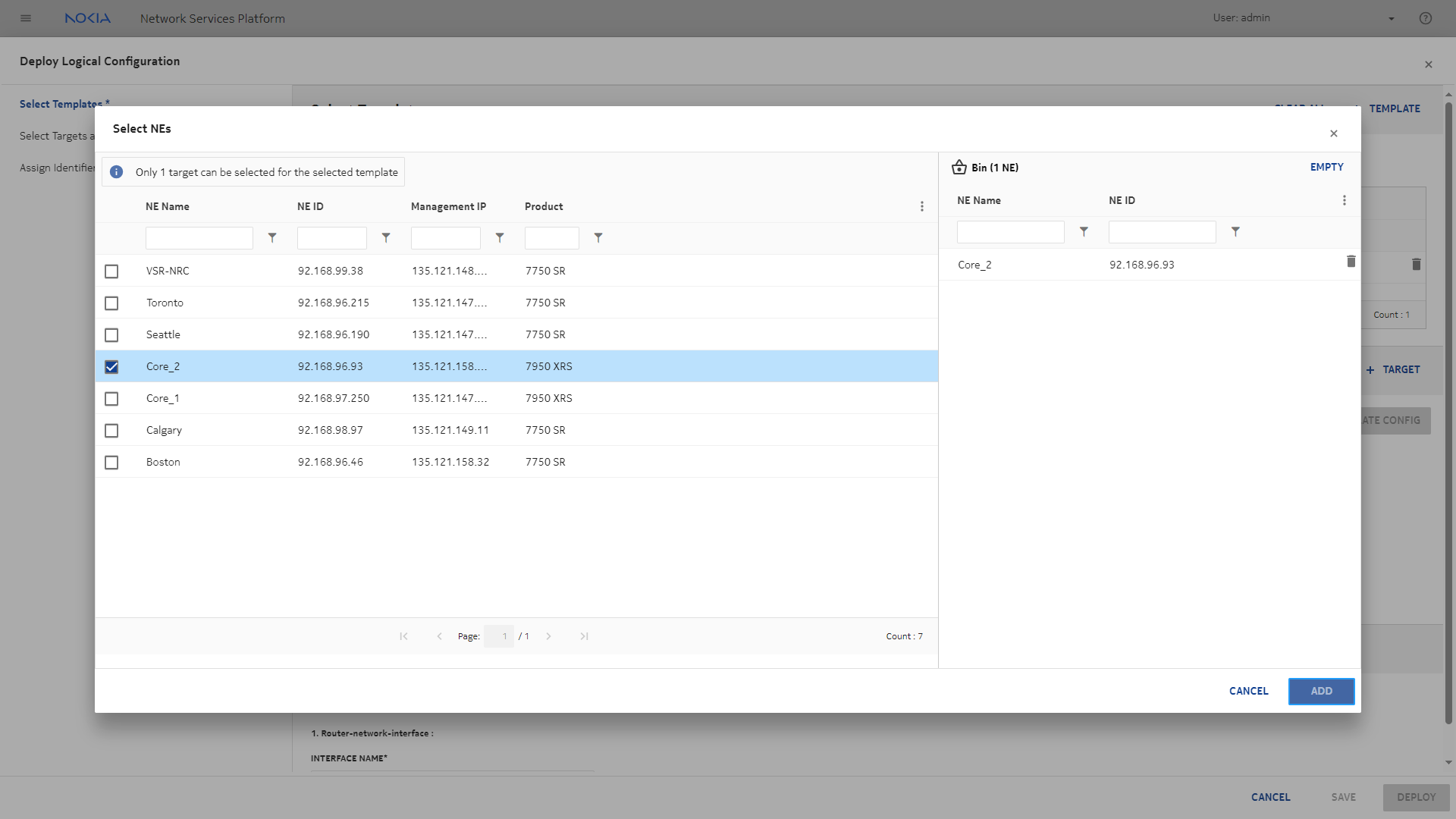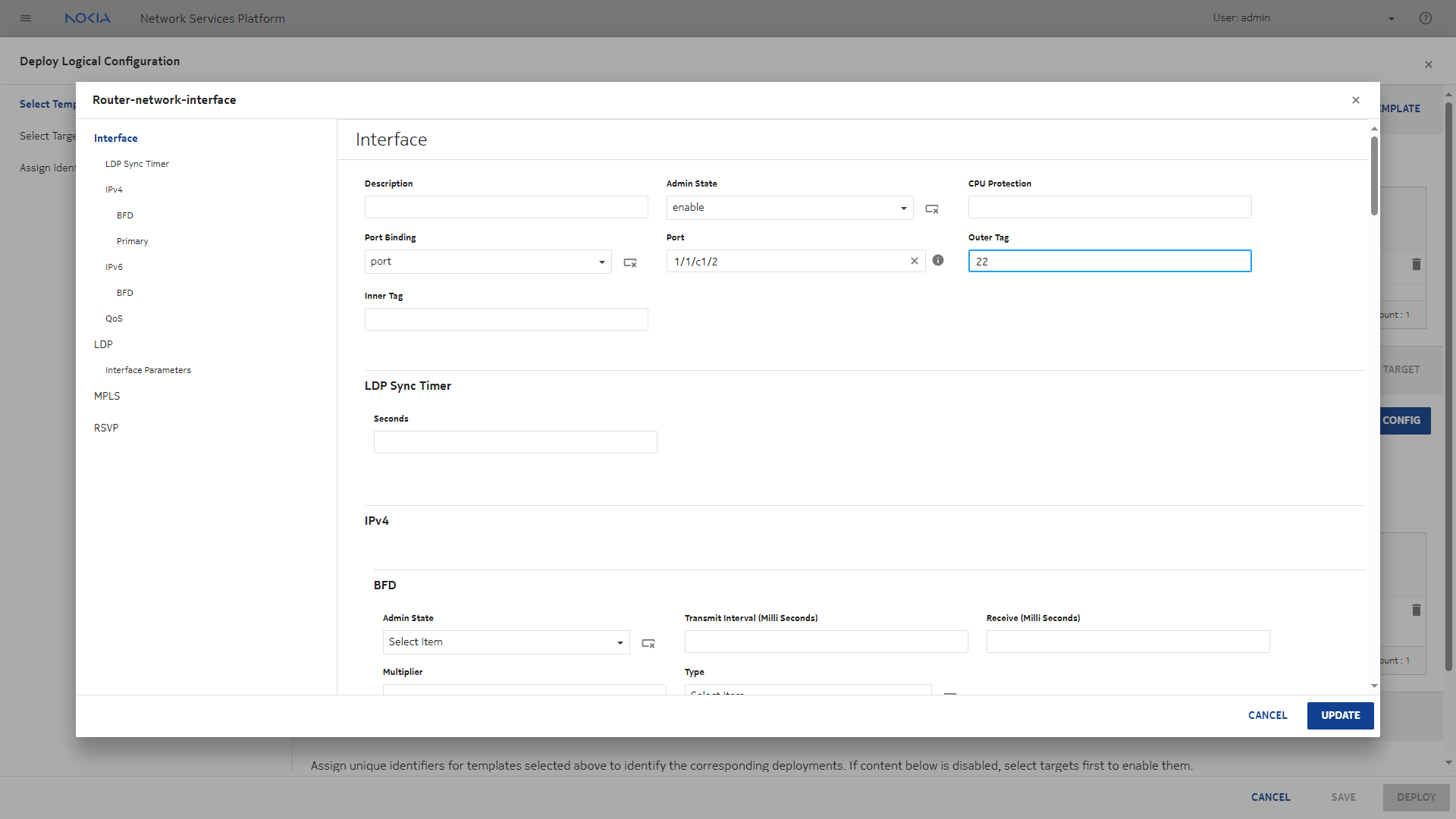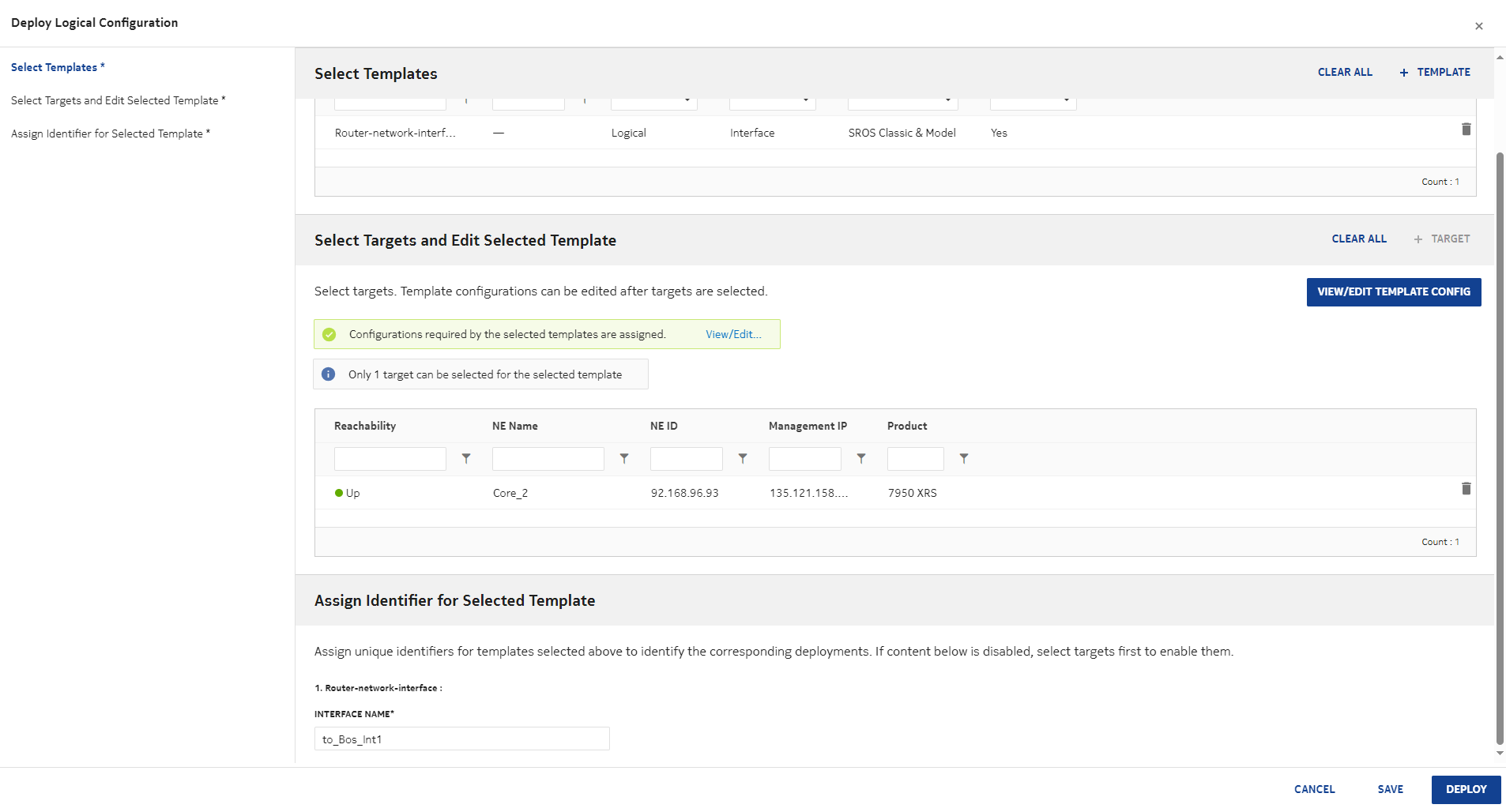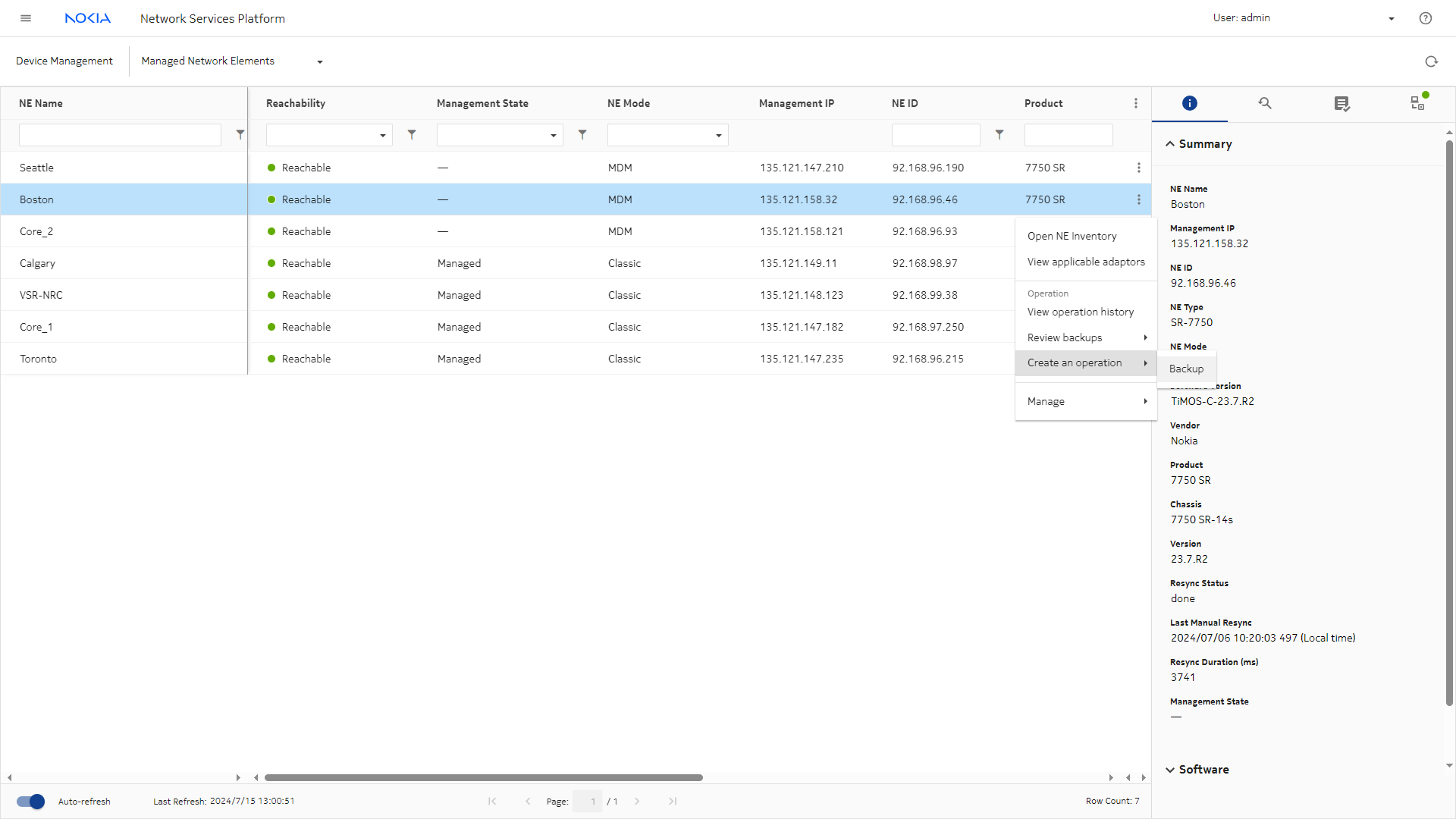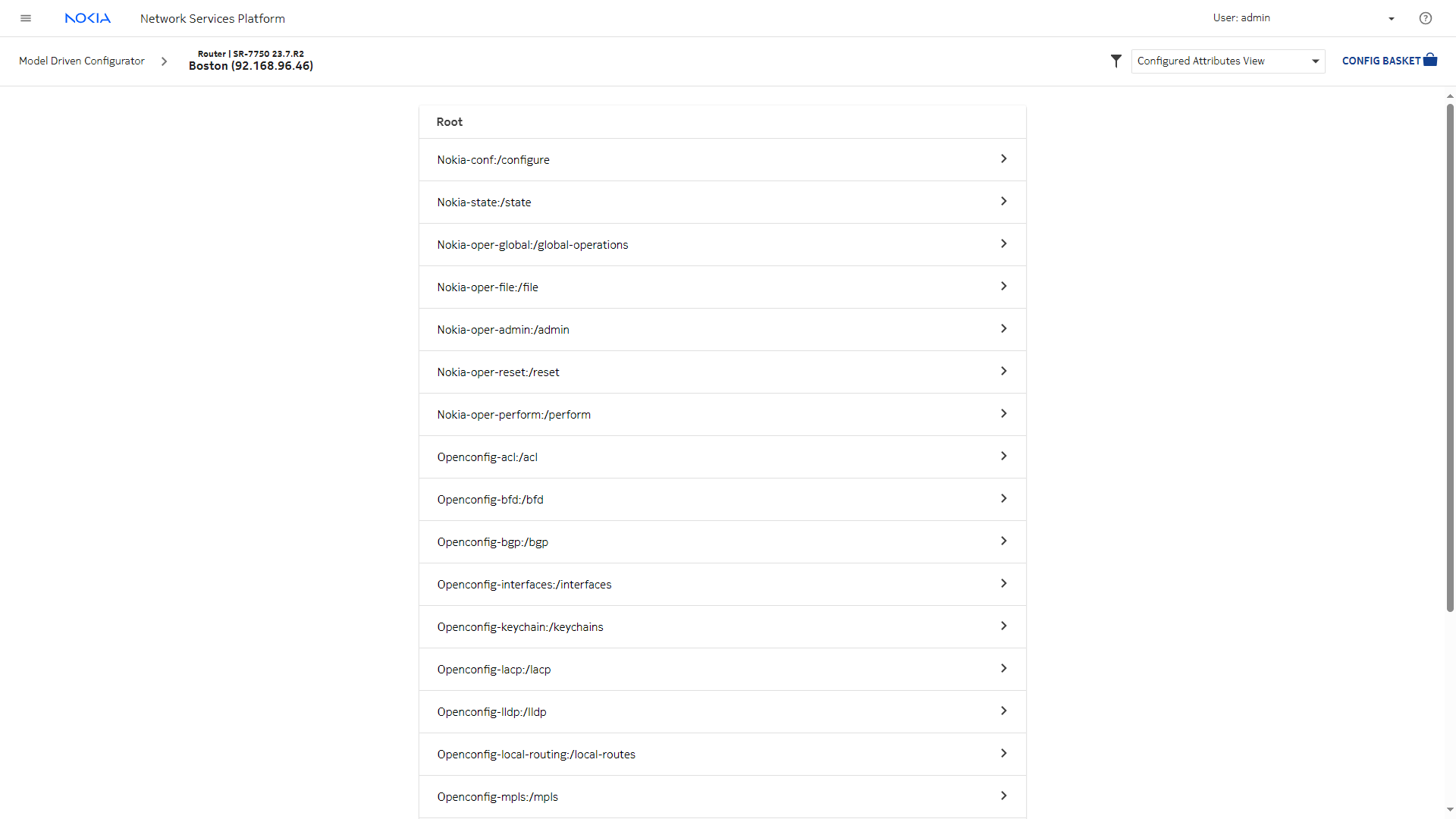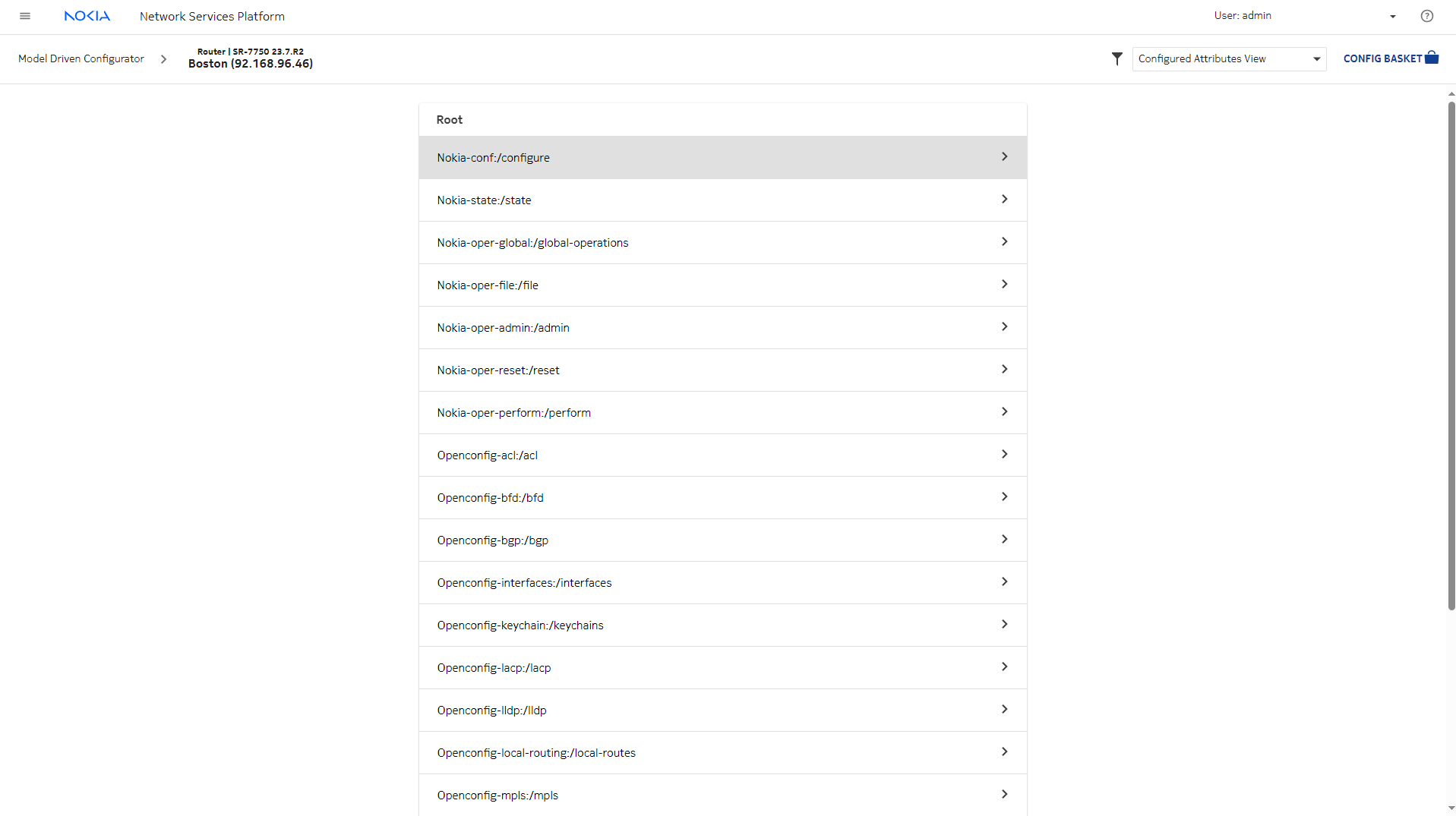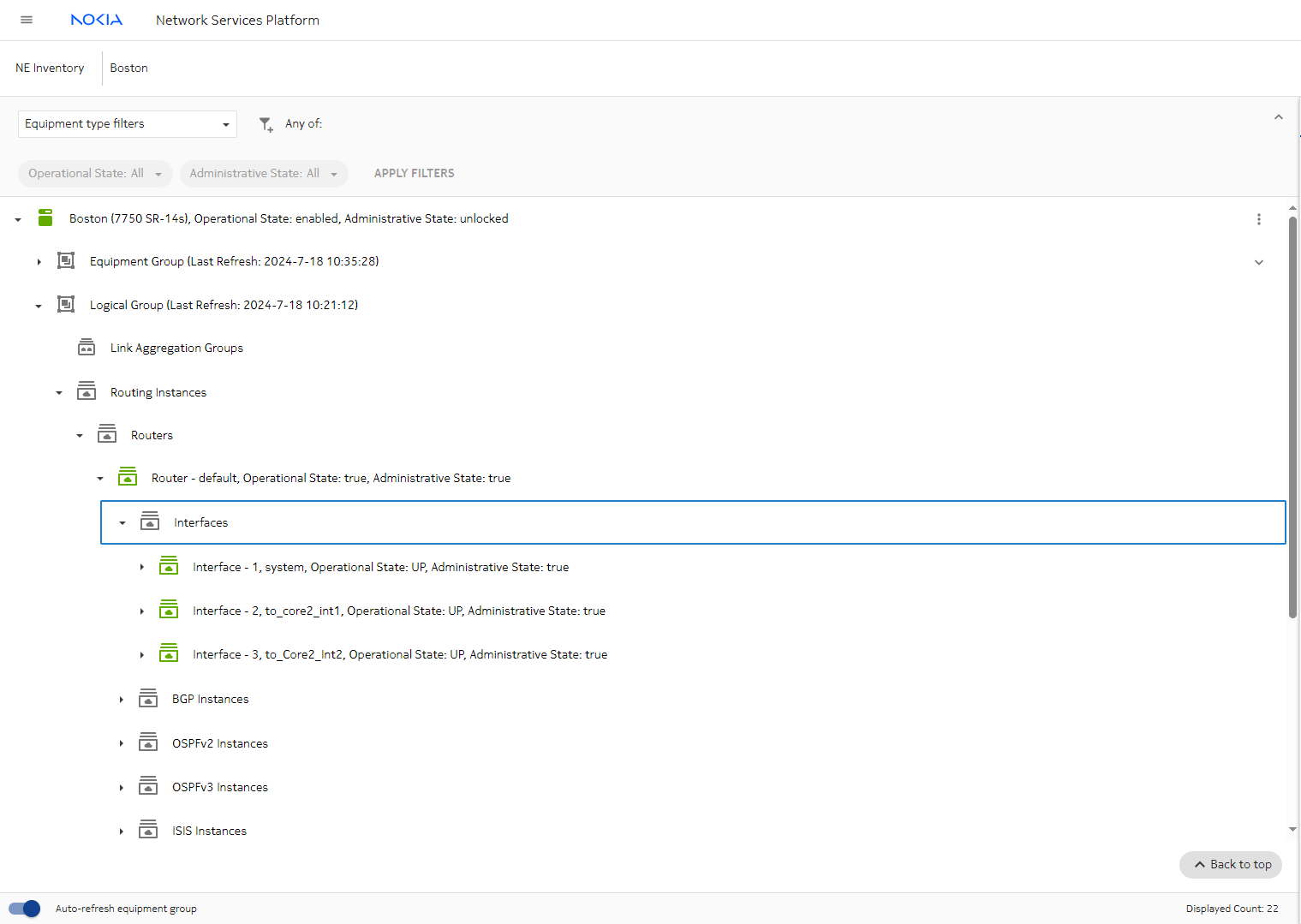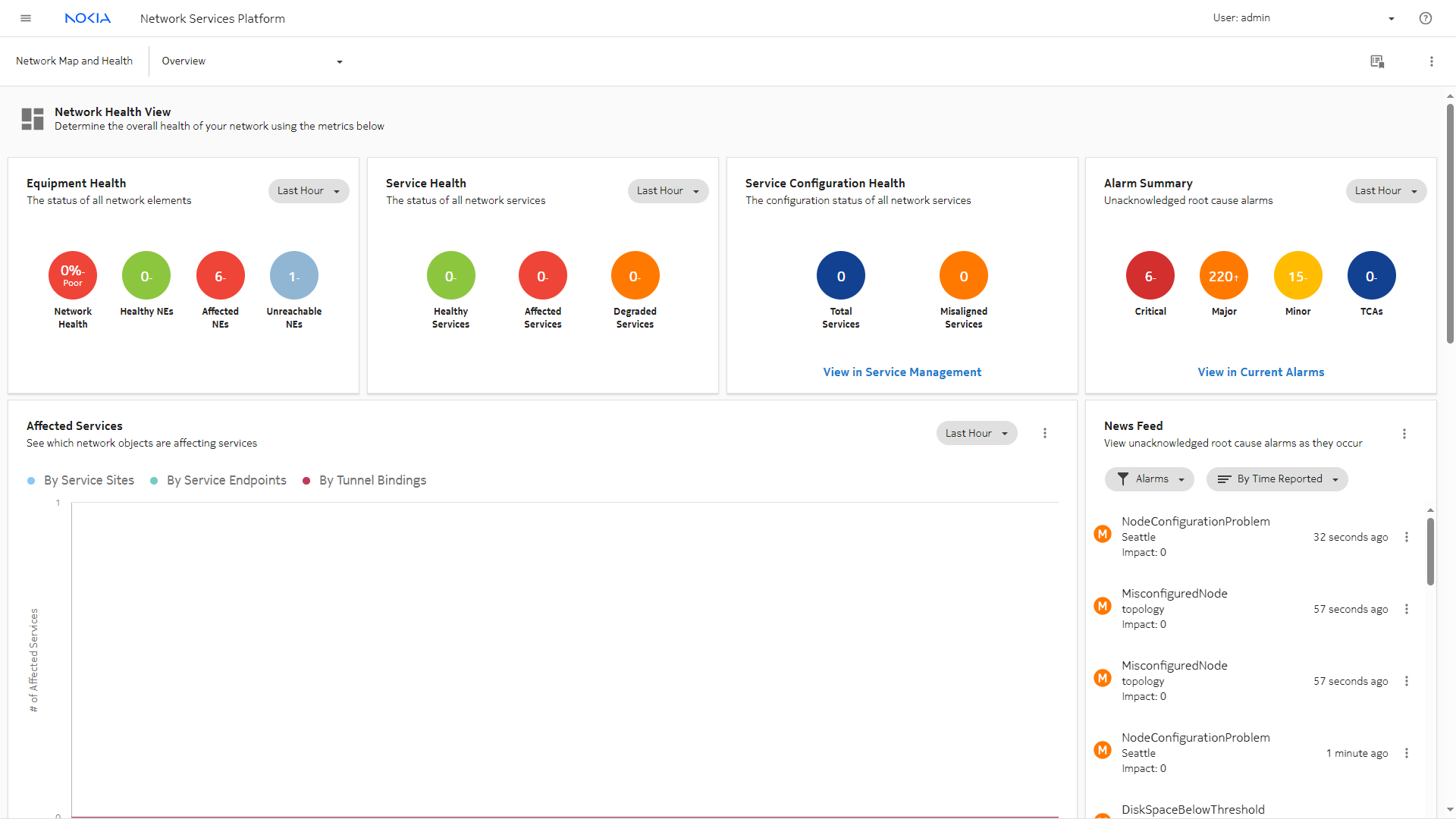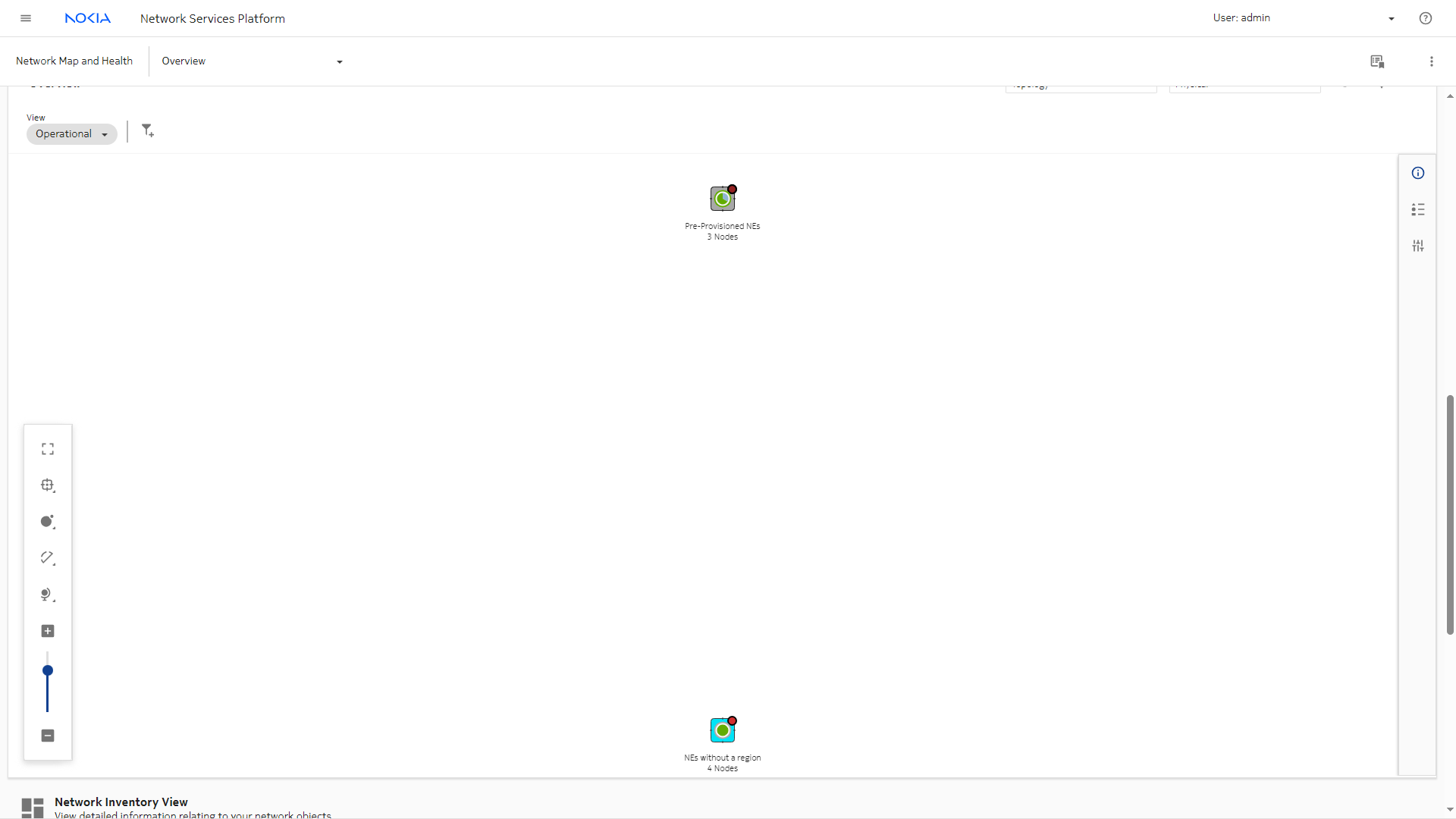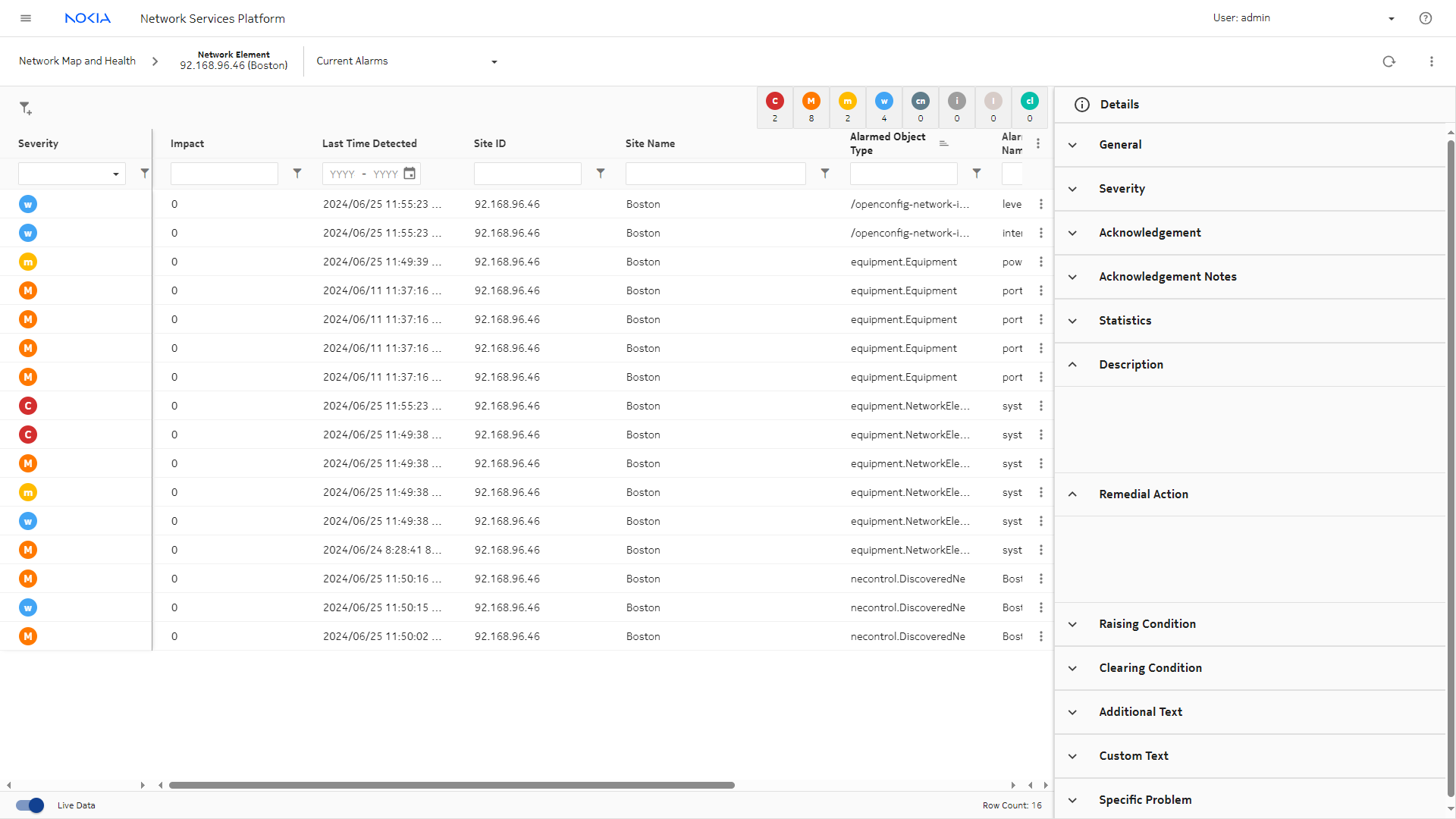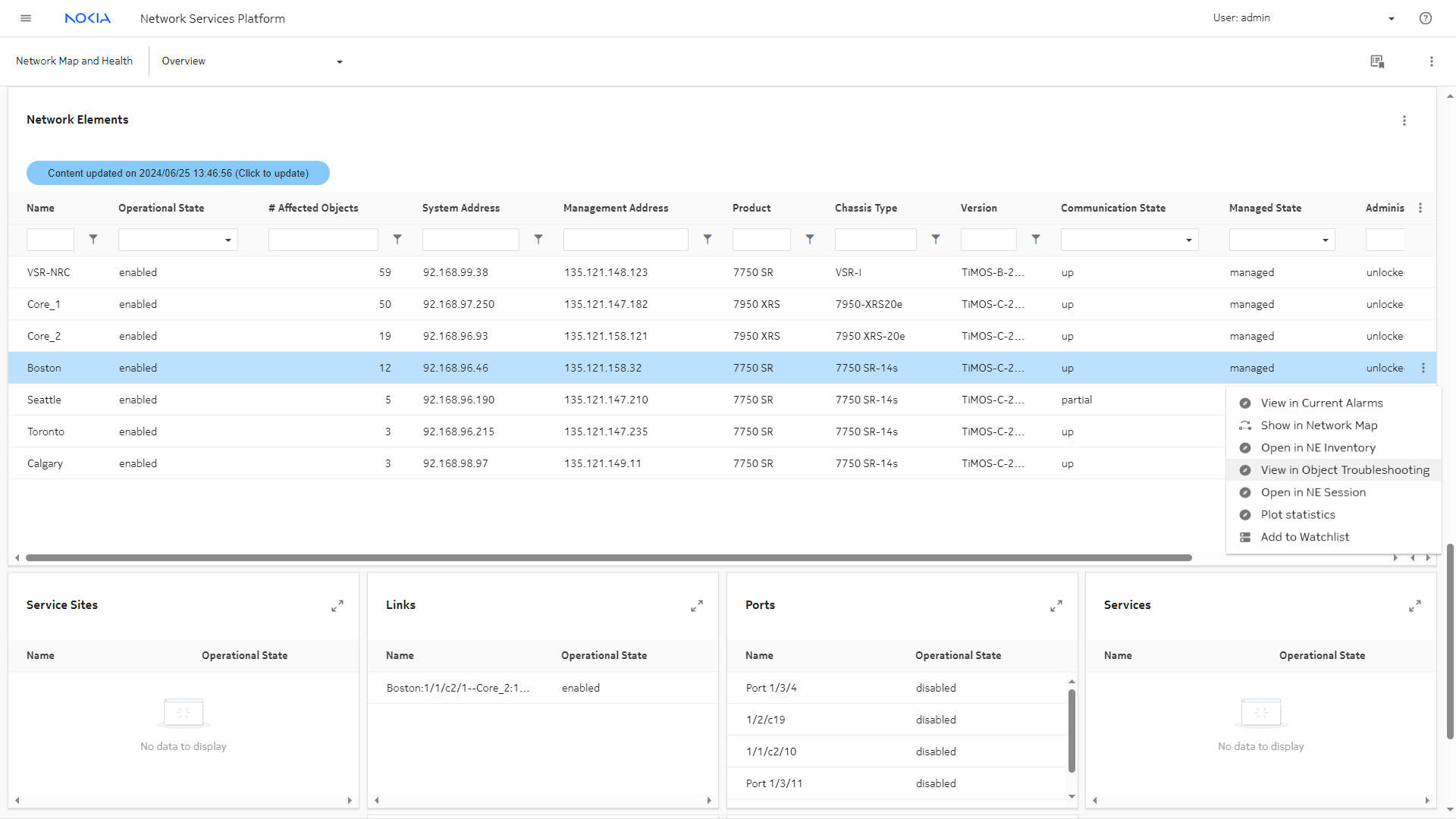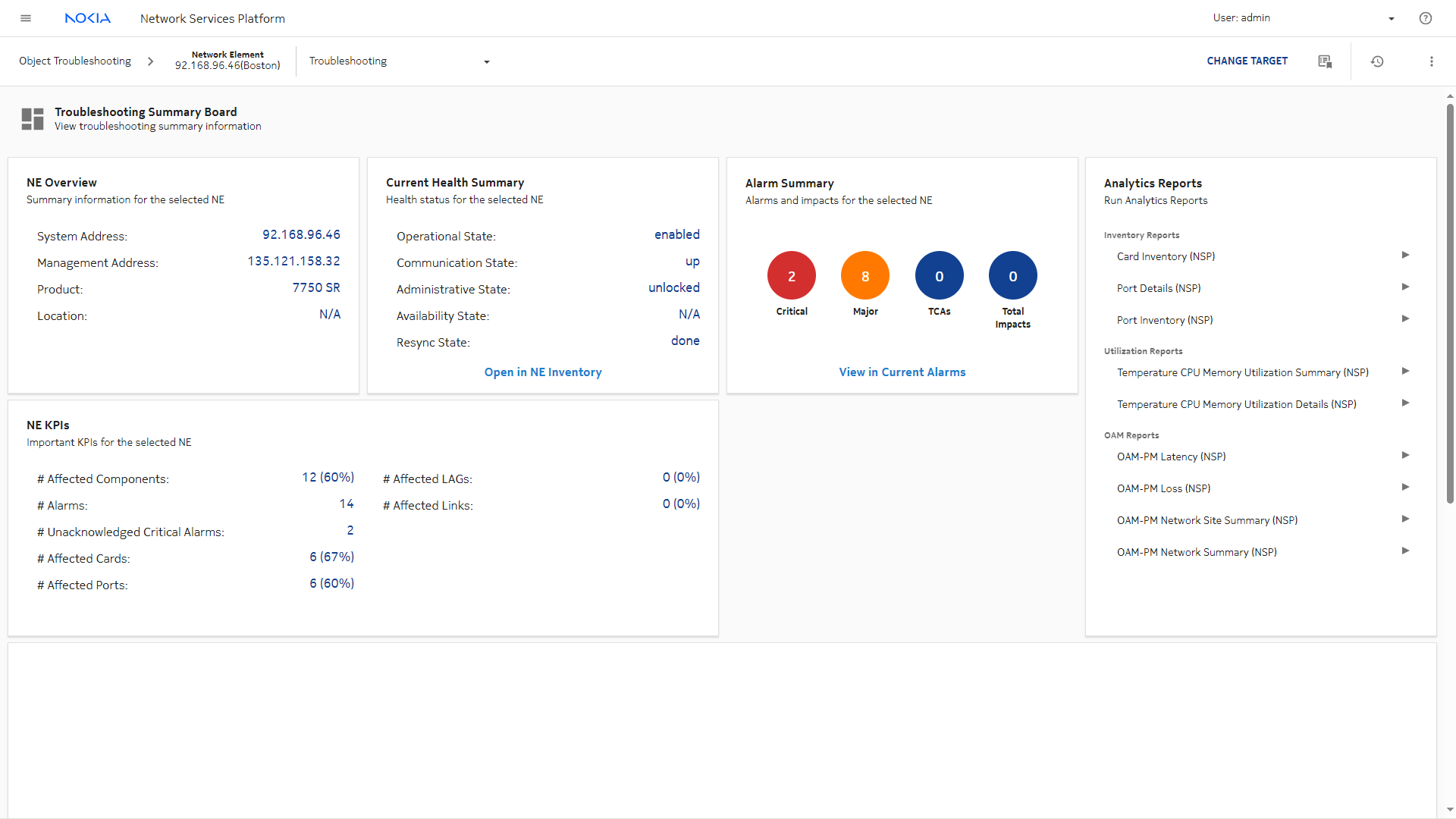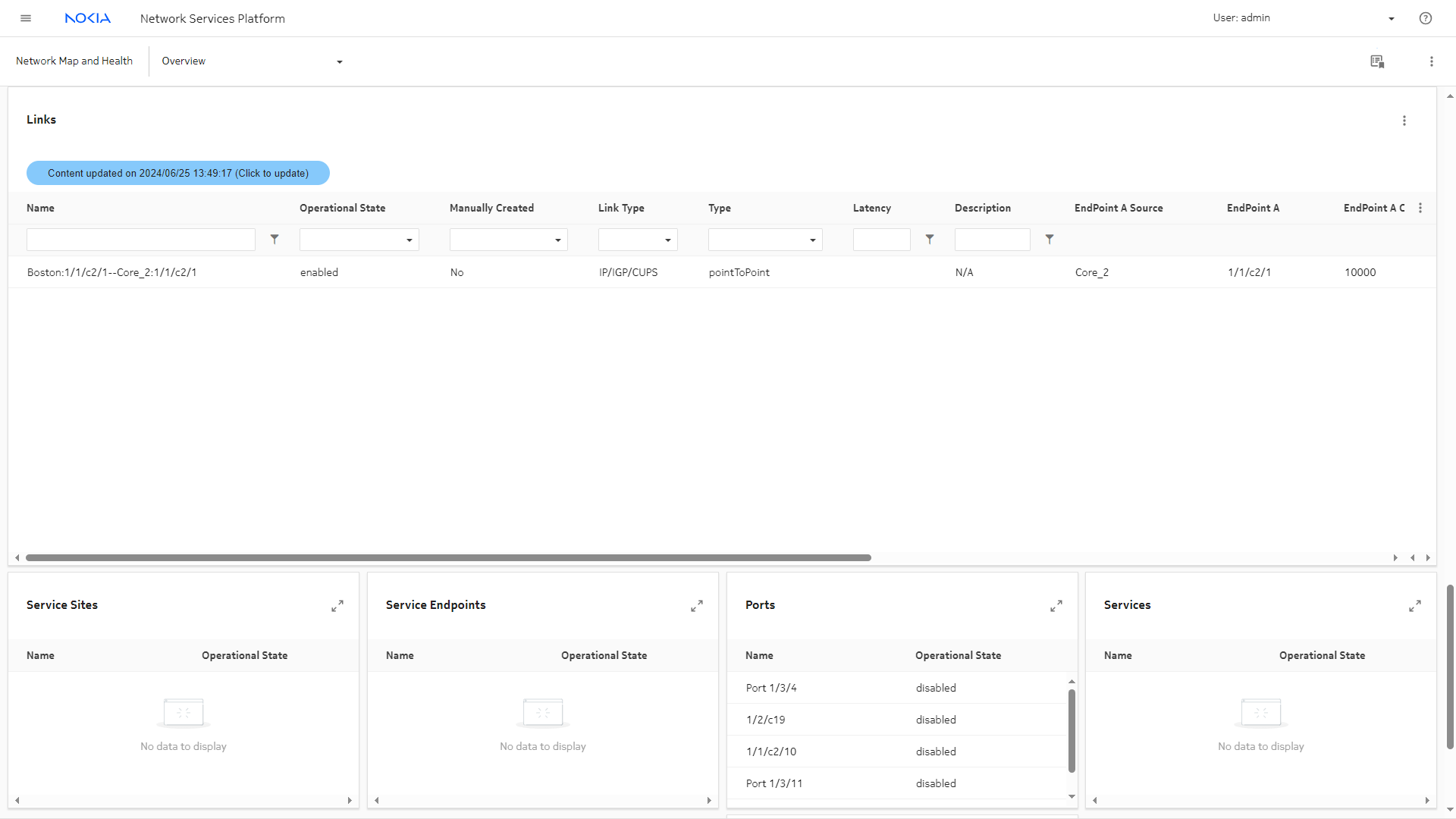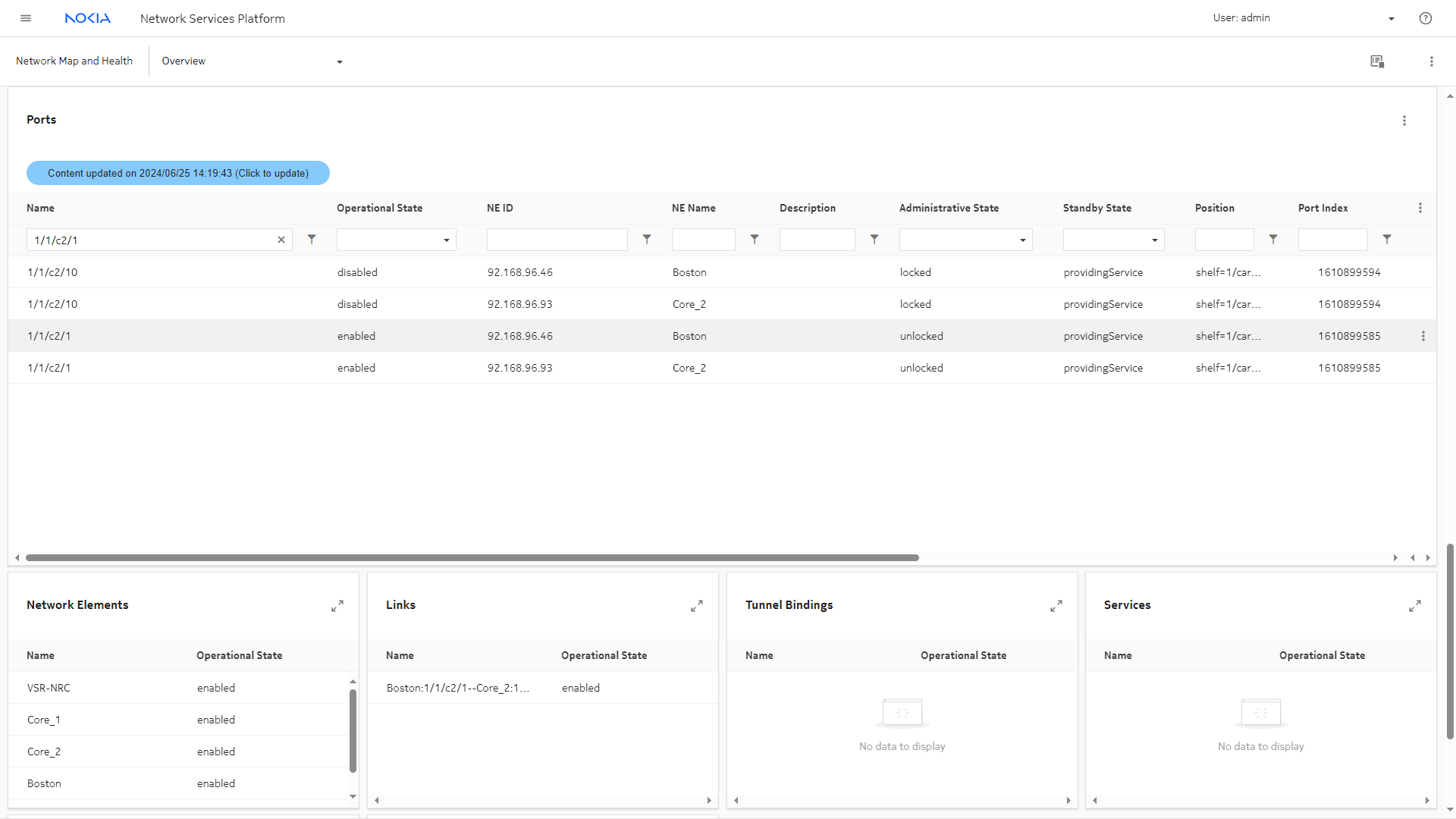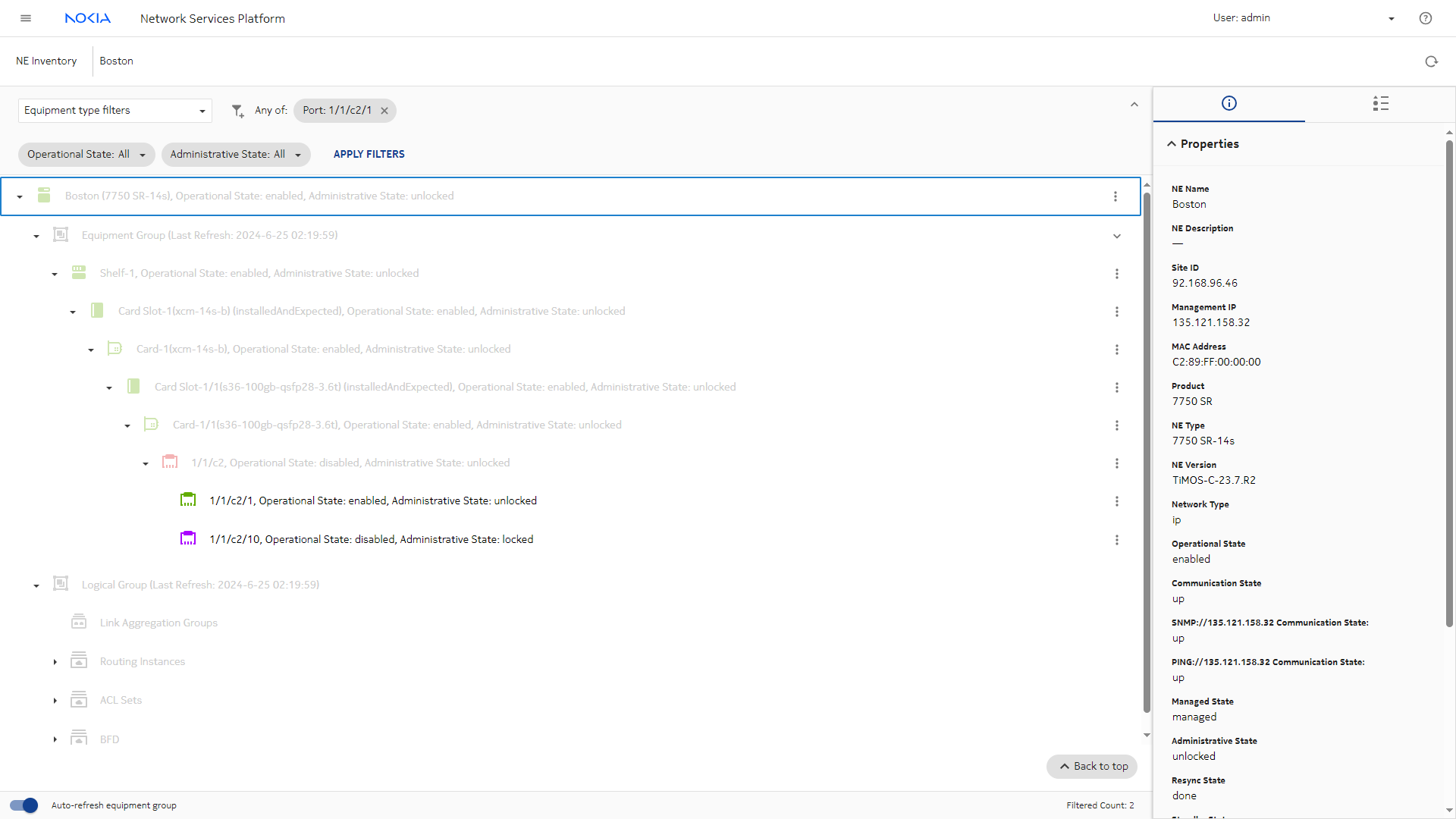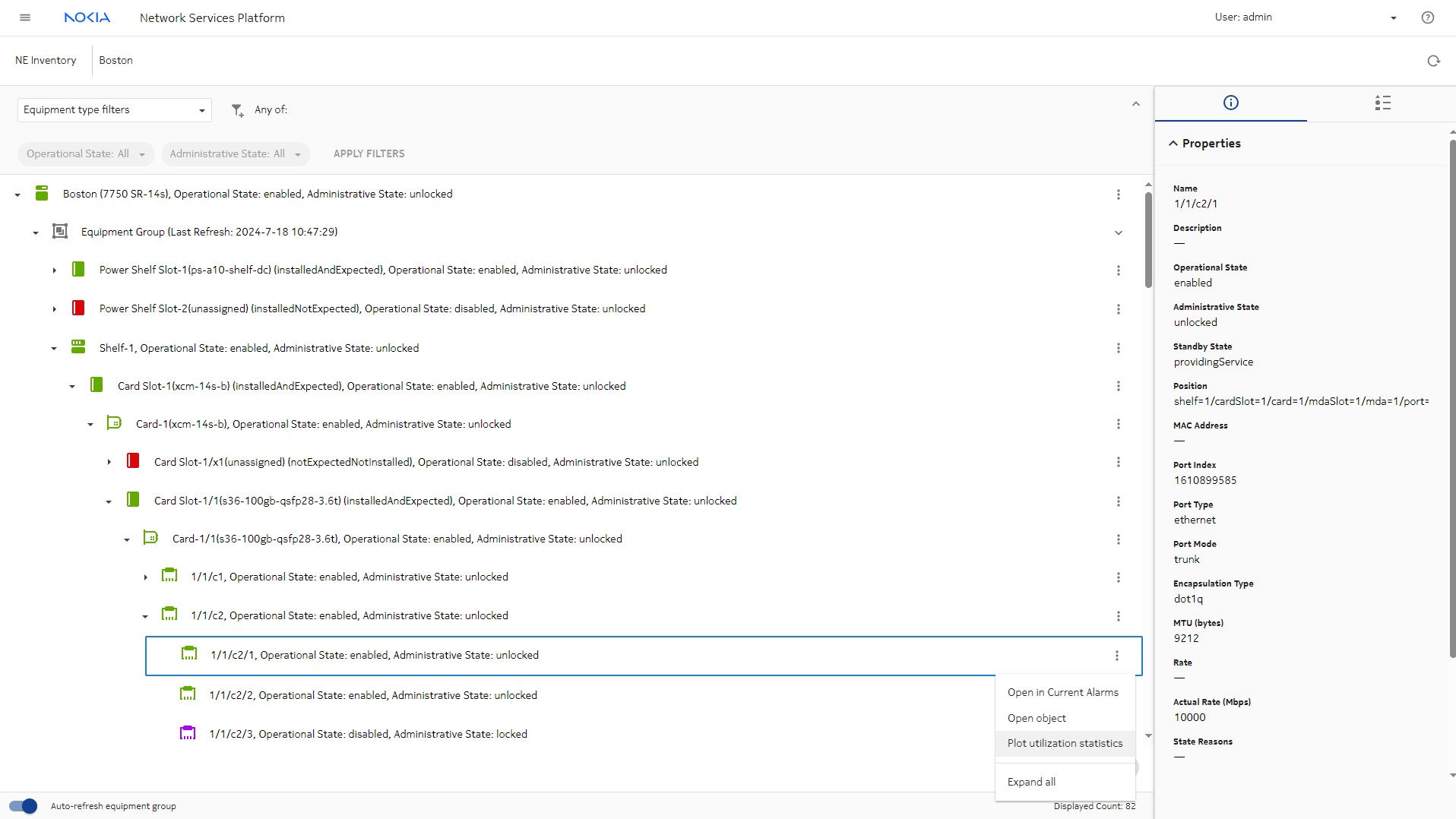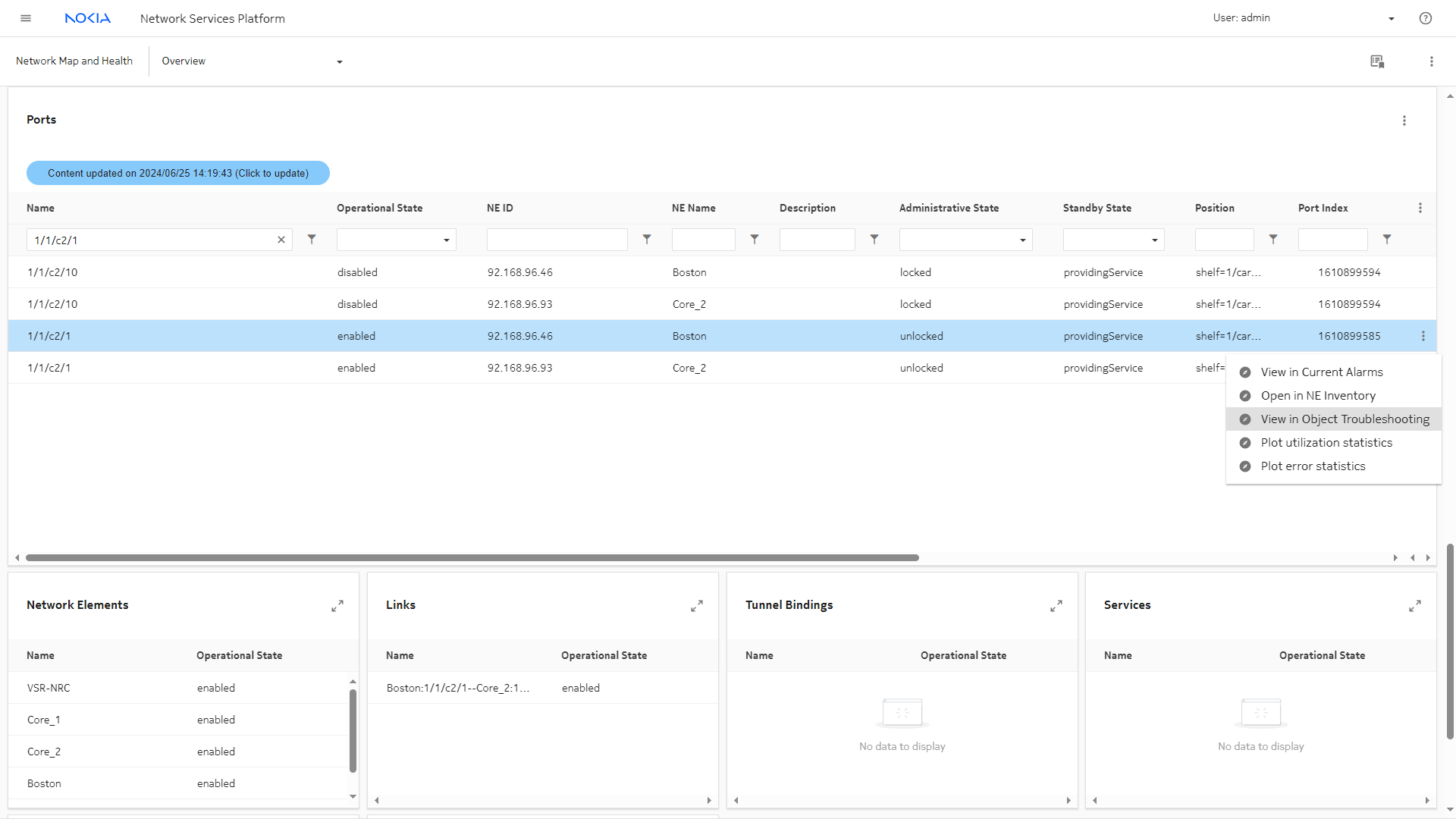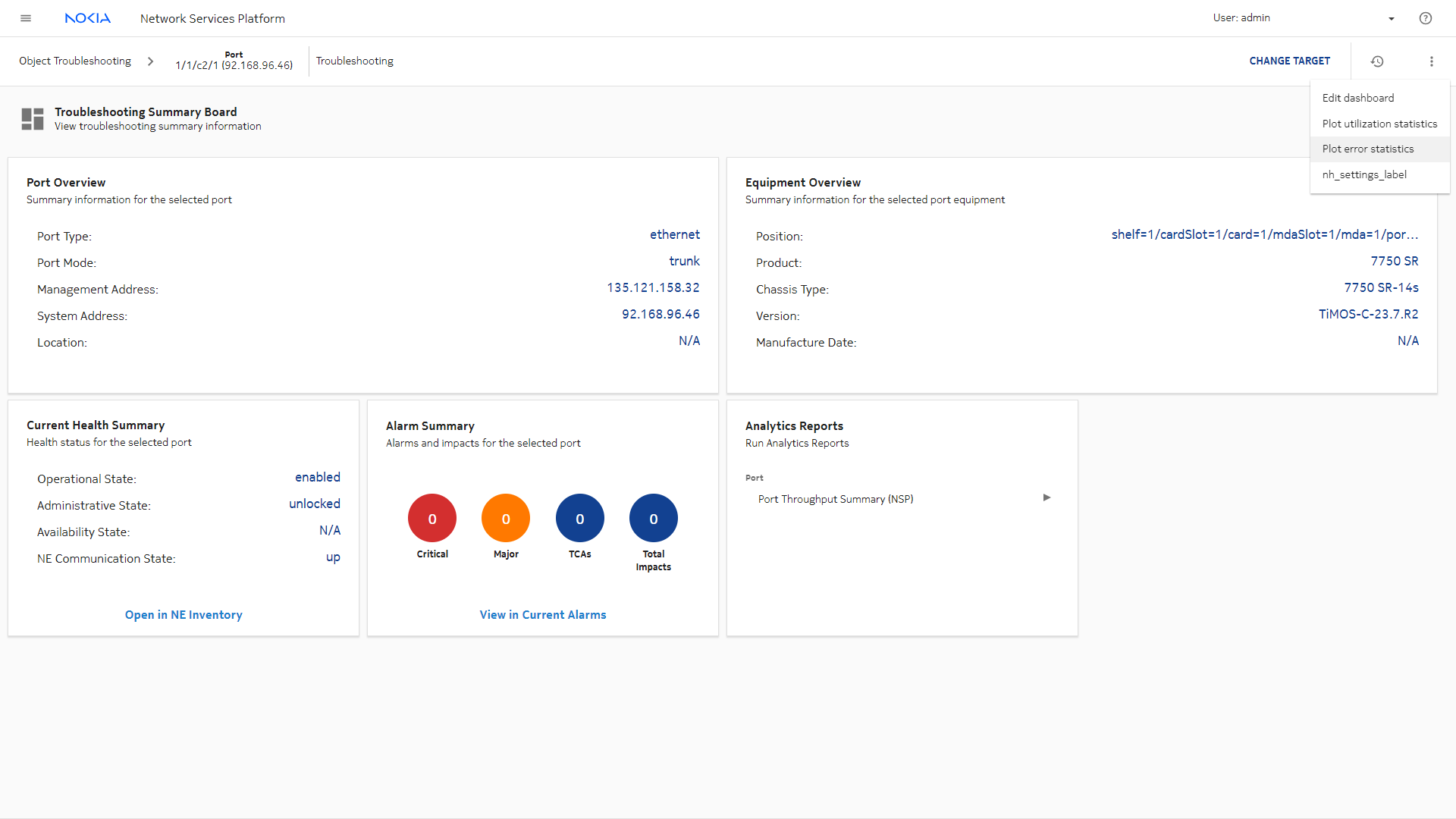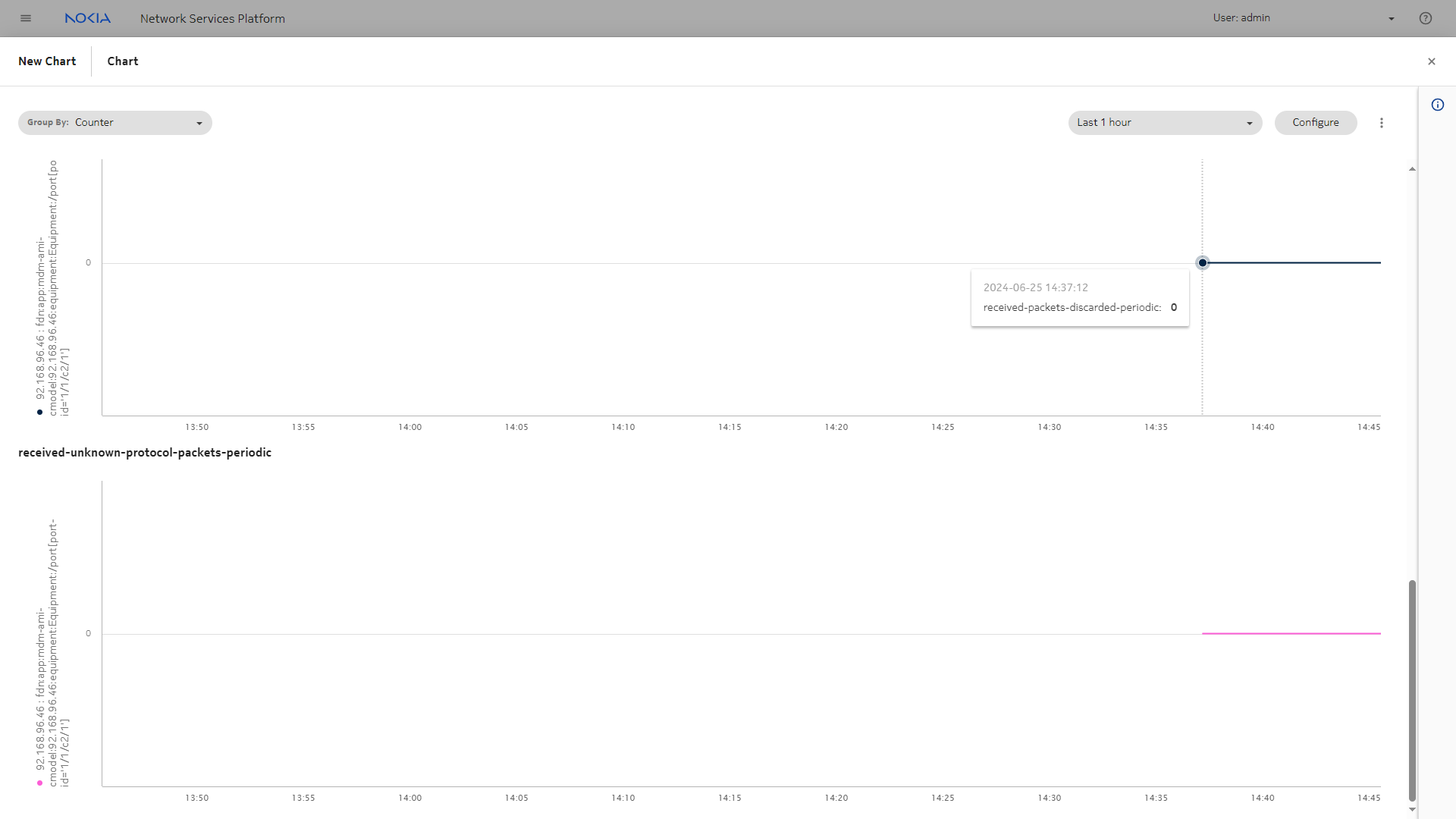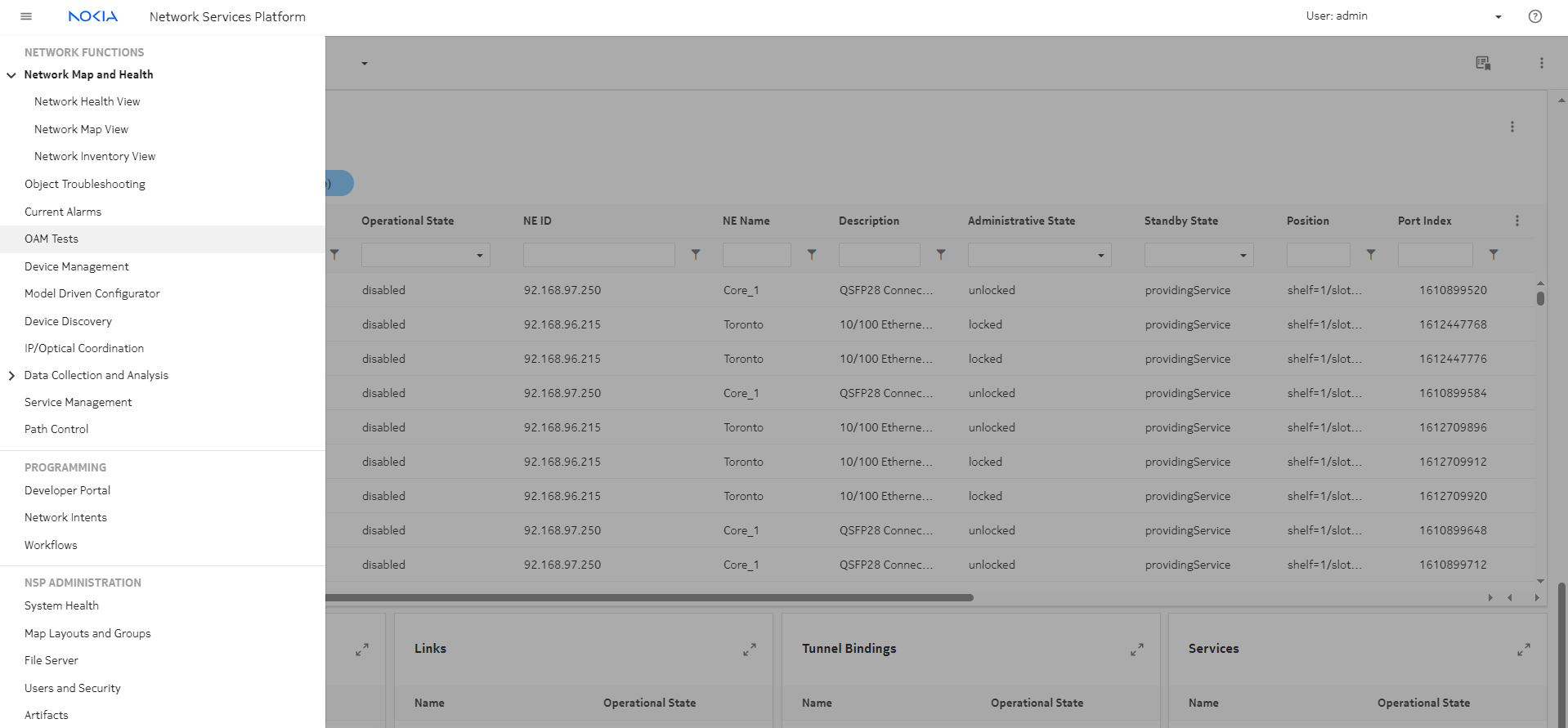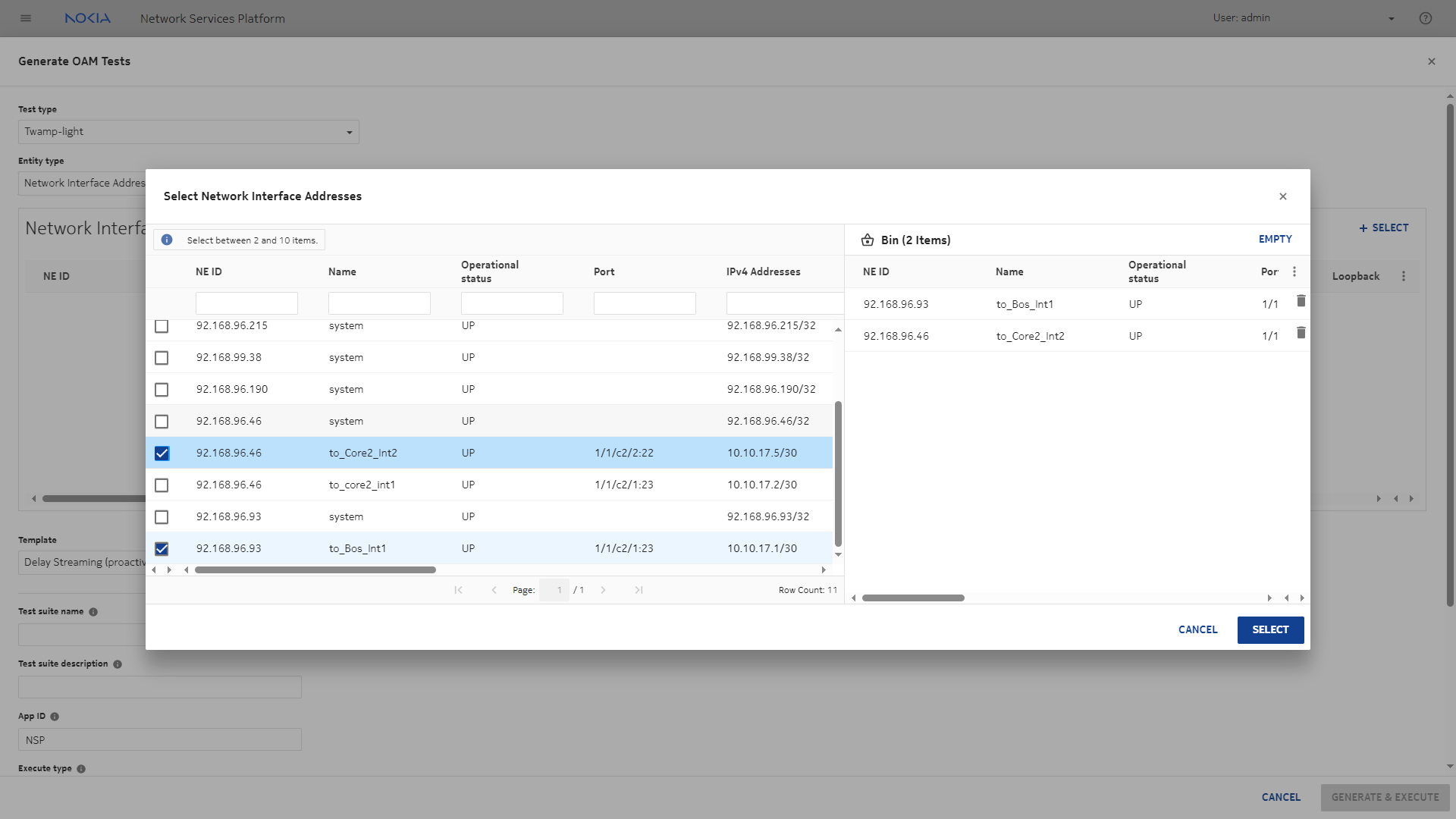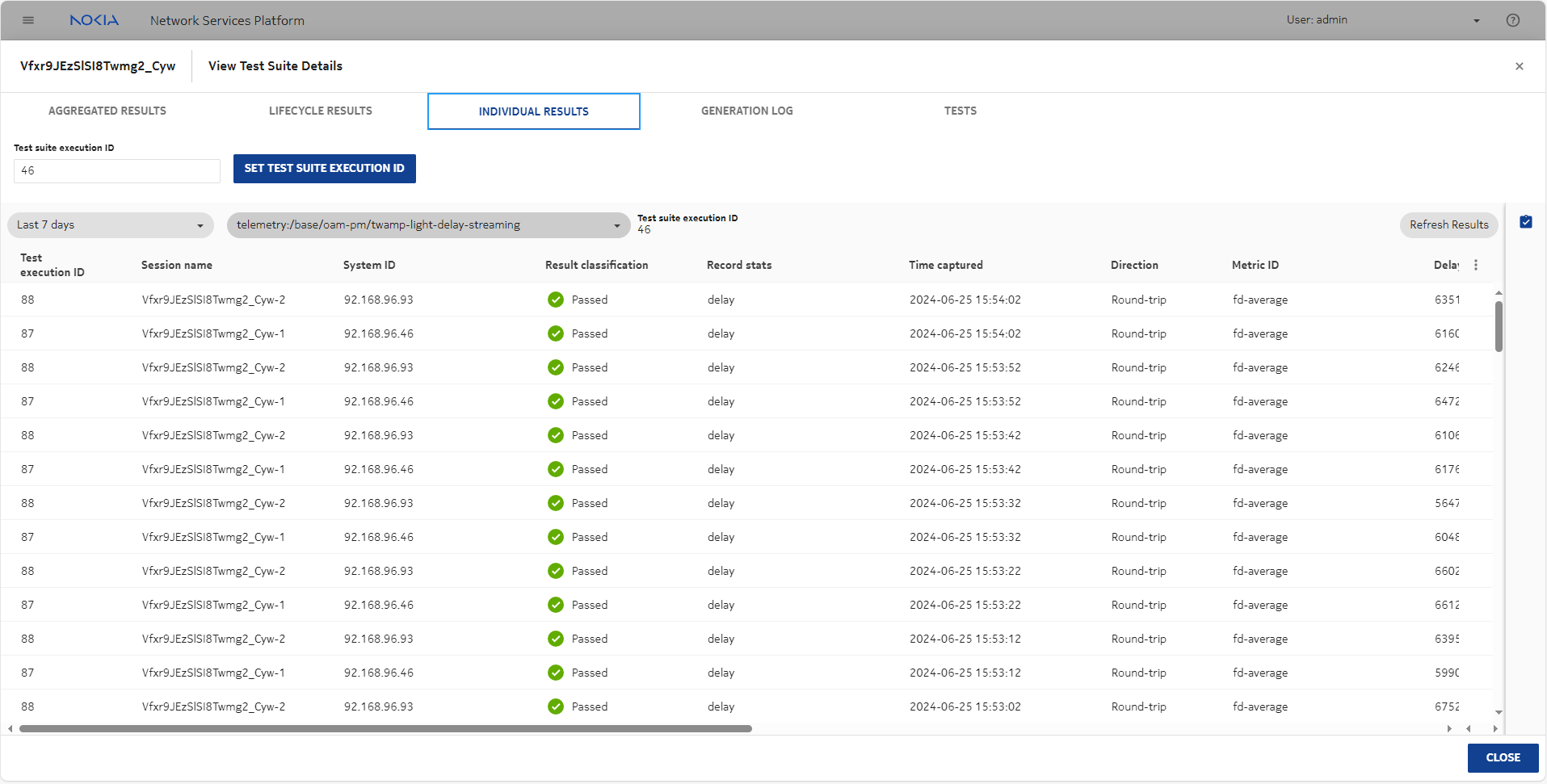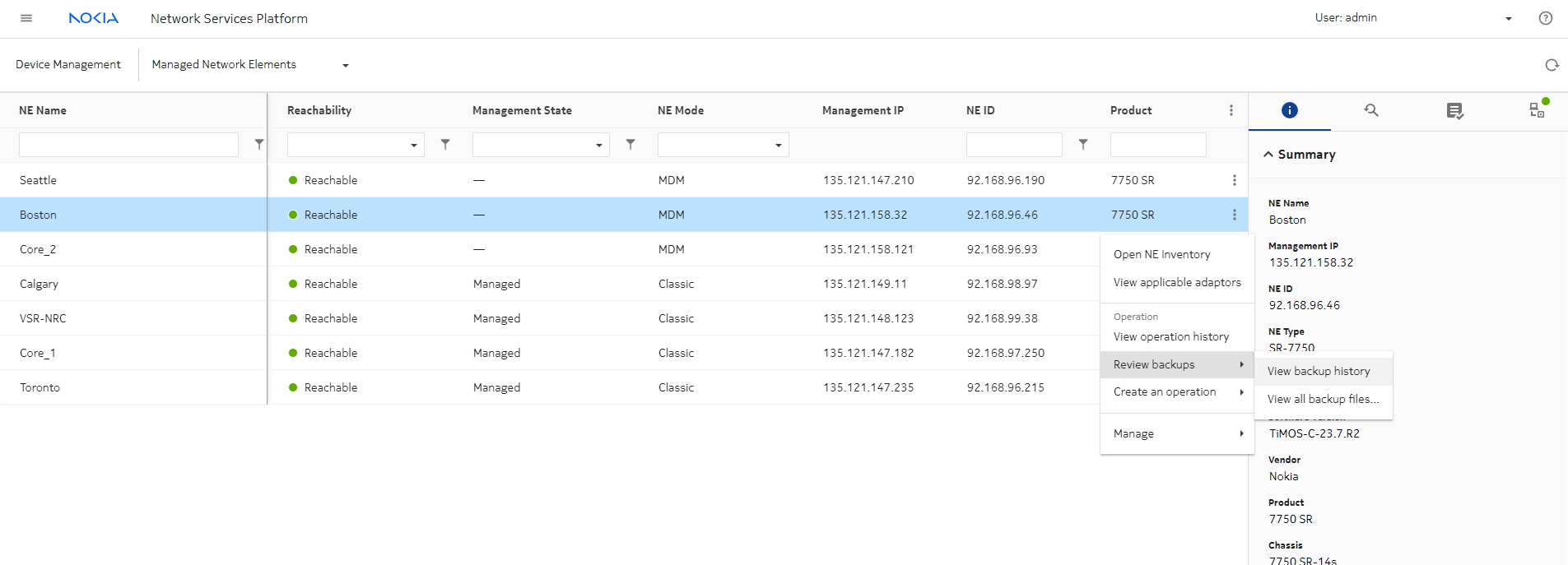| |
|
1 |
Next, we’ll configure NE components. This can be done by deploying a series of templates in the Device Management, Configuration Deployments view.
|
2 |
From the Device Management, Configuration Deployments view, click  DEPLOYMENT. We’ll start by configuring Cards and MDAs, which are physical components: select Physical from the drop-down. DEPLOYMENT. We’ll start by configuring Cards and MDAs, which are physical components: select Physical from the drop-down.
|
3 |
In the form that opens, click  TEMPLATE and choose the template for Card and MDA configuration. TEMPLATE and choose the template for Card and MDA configuration.
|
4 |
Choose a card to add as the target:
-
Click  TARGET and select Cards as the target type. TARGET and select Cards as the target type.
-
Choose a card slot from the list to add it to the Bin and click ADD
|
5 |
Click VIEW/EDIT TEMPLATE CONFIG. In the form that opens, configure the card parameters:
-
Choose a card type.
-
In the MDA panel, click  ADD and configure the parameters to create an MDA. ADD and configure the parameters to create an MDA.
-
Click UPDATE.
|
6 |
Click DEPLOY to deploy the configuration.
|
7 |
Create physical deployments for additional connectors and ports, using their templates. The overall steps are very similar to creation of a Card and MDA deployment, but the parameters vary by template.
-
Configure deployments for port connectors if applicable, using the template created from the icm-equipment-port-connector intent type.
-
Configure deployments for ports, using the template created from the icm-equipment-port-ethernet intent type.
|
8 |
After the port configurations have been deployed, configure OSPF and ISIS routing on the NE using CLI.
|
9 |
Now we can create a logical deployment to configure a router interface.
Click  DEPLOYMENT and select Logical from the drop-down. DEPLOYMENT and select Logical from the drop-down.
|
10 |
|
11 |
In the form that opens, click  TEMPLATE and choose the template for router interface configuration. Click ADD. TEMPLATE and choose the template for router interface configuration. Click ADD.
|
12 |
Choose a target:
-
Click  TARGET and choose NEs from the drop-down list. TARGET and choose NEs from the drop-down list.
-
Choose an NE from the list to add it to the Bin and click ADD.
|
13 |
-
Click VIEW/EDIT TEMPLATE CONFIG. In the form that opens, configure the interface parameters. Scroll through the form to update parameters as needed.
-
Click UPDATE.
|
14 |
Enter a name for the interface in the INTERFACE NAME field.
|
15 |
Click DEPLOY to deploy the configuration.
|
16 |
Audit and align each deployment:
-
For each of the deployments we created, select the deployment and click AUDIT.
-
Click ALIGN to ensure that the NE configuration is aligned with the templates.
|

